A Visitor's Guide to the Smithsonian Museums in Washington DC
A Guide to All of the Museums in Washington DC
:max_bytes(150000):strip_icc():format(webp)/Rachel-58092b055f9b58564c6639af.jpg)
The Smithsonian Museums in Washington, DC are world class attractions with a variety of exhibits ranging from a 3.5 billion-year-old fossil to the Apollo lunar landing module. Visitors enjoy examining more than 137 million objects, including many irreplaceable historic artifacts, works of art, scientific specimens and cultural exhibits. Admission to all of the Smithsonian museums is free. With 19 museums and galleries, there truly is something for everyone. Guided tours, hands-on activities and special programs are available. Although many of the museums are located within walking distance to each other on the National Mall, several of them are located in other parts of the city.
Following is a guide to help you plan your visit to the Smithsonian.

General Information
- Frequently Asked Questions
- A Map of the Smithsonian Museums
- 10 Things to Know About the Mall in Washington DC
Museums Located on the National Mall
- Smithsonian Institution Building - 1000 Jefferson Drive SW, Washington, D.C. The historic building, also known as the Castle, is a good place to start your tour of the museums. The Smithsonian Information Center is located here and you can find a map and schedule of events.
- Smithsonian Arts and Industries Building - 900 Jefferson Drive SW, Washington, DC. The original home of the National Museum is currently closed for renovations.
- Smithsonian National Air and Space Museum - Jefferson Drive, between 4 th Street and 7 th Street, SW, Washington, D.C. This impressive museum displays the largest collection of air and spacecraft in the world as well as smaller items like instruments, memorabilia, and clothing. Learn about the history, science, and technology of aviation and space flight.
- Smithsonian Hirshhorn Museum and Sculpture Garden - Independence Ave. and 7th St. SW, Washington, D.C. The modern and contemporary art exhibits include arts of traditional historical themes and collections addressing emotion, abstraction, politics, process, religion, and economics.
- Smithsonian Freer Gallery - 1050 Independence Ave. SW, Washington, D.C. The world-renowned collection highlights art from China, Japan, Korea, South, and Southeast Asia, and the Near East. Paintings, ceramics, manuscripts, and sculptures are among the favorites of this museum. The Eugene and Agnes E. Meyer Auditorium provides free programs relating to the collections of the Freer and Sackler galleries, including performances of Asian music and dance, films, lectures, chamber music, and dramatic presentations.
- Smithsonian Sackler Gallery - 1050 Independence Ave. SW, Washington, D.C. This unique building is connected underground to the Freer Gallery of Art. The Sackler collection includes Chinese bronzes, jades, paintings and lacquerware, ancient Near Eastern ceramics and metalware, and sculpture from Asia.
- Smithsonian National Museum of African Art - 950 Independence Ave. SW, Washington, D.C. The collection includes ancient as well as contemporary works from Africa. There are special events, storytelling, demonstrations and children’s programs.
- Smithsonian Natural History Museum - 10th St. and Constitution Ave. NW, Washington, D.C. At this family favorite museum, you will see a variety of artifacts including an 80-foot dinosaur skeleton, a life-size model of a blue whale, an enormous prehistoric white shark, and a 45-and-a-half karat jewel a known as the Hope Diamond. The Discovery Room is a great hands-on display for young children. Feel the skin of a crocodile, examine the jaws and teeth of different animals or try on clothes from around the globe.
- Smithsonian American History Museum - 12th to 14th Sts. NW, Washington, D.C. With more than 3 million artifacts of American history and culture, visitors learn about the nation's history from the War of Independence to the present day. At the heart of the museum, the Star-Spangled Banner—one of the most recognized symbols of the nation—has been given a new state-of-the-art gallery. New galleries such as the Jerome and Dorothy Lemelson Hall of Invention, presenting “Invention at Play,” join old favorites including “The American Presidency: A Glorious Burden” and “America on the Move.”
- Smithsonian National Museum of the American Indian - 4th St. and Independence Ave. SW, Washington, D.C. The newest museum on the National Mall in Washington, DC showcases Native American objects from ancient pre-Columbian civilizations through the 21st century. Multimedia presentations, live performances, and hands-on demonstrations will bring the Native American people’s history and culture to life.
- Smithsonian International Gallery - 1100 Jefferson Drive, SW Washington, D.C. Housed in the S. Dillon Ripley Center, this is the education and membership branch of the Smithsonian Associates and hosts a variety of traveling exhibits. The Smithsonian Discovery Theater and conference facilities are also located here.
- Smithsonian National Museum of African American History and Culture - Independence Ave. SW, Washington DC. The 300,000-square-foot museum is under construction and is expected to open in 2016. The museum has created a website to involve the public in planning a variety of exhibits and educational programs on topics such as slavery, post-Civil War reconstruction, the Harlem Renaissance, and the civil rights movement.
Don't miss the other Smithsonian Museums that are located off of the Mall:
- National Zoo - Rock Creek Park , Washington, DC. The National Zoo is a part of the Smithsonian Institution with more than 435 different species of animals. Open year-round, the world-class property offers the opportunity to view and learn about favorites including giant pandas, elephants, tigers, cheetahs, sea lions and much more. The Smithsonian Biology Conservation Institute , the Zoo's conservation, and research center, located in Front Royal, Virginia, is a breeding preserve for rare and endangered species.
- Smithsonian Anacostia Community Museum - 1901 Fort Place SE, Washington, DC. This small museum focuses on African American culture. Exhibits rotate and feature regional and national topics.
- Smithsonian National Postal Museum - 2 Massachusetts Ave. NE, Washington, DC. The museum displays the largest stamp collection in the world and examines the development of the postal system using interactive displays. This museum is located under Washington's old Main Post Office near Union Station.
- Smithsonian Renwick Gallery - 70 9th St. NW, Washington, DC. The building was the original site of the Corcoran Gallery and is furnished with American crafts and contemporary arts from the 19th to 21st centuries. The museum features unique works of art in an impressive setting across the street from the White House.
- National Portrait Gallery and the Smithsonian American Art Museum - 8th and F Streets NW., Washington, DC. This restored historic building in the Penn Quarter neighborhood of downtown Washington, DC, houses two museums in one building. The National Portrait Gallery presents six permanent exhibitions of nearly 20,000 works ranges from paintings and sculpture to photographs and drawings. The Smithsonian American Art Museum is the home of the largest collection of American art in the world including more than 41,000 artworks, spanning more than three centuries.
- Steven F. Udvar-Hazy Center - 14390 Air and Space Museum Pkwy, Chantilly, VA. The Smithsonian National Air and Space Museum opened a companion facility on the property of Washington Dulles International Airport to showcase additional aircraft, spacecraft, and other artifacts. The museum has an IMAX Theater , flight simulators, a museum store, guided tours, and educational programs.
The Best Art Museums to Visit in Washington, D.C.
15 Best Places to Go with Kids in the Washington, D.C. Area
Best 14 Washington, D.C. Museums
Washington DC Old Town Trolley Tours: Hop on Hop off
What to See and Do on the National Mall in Washington, D.C.
20 Best Things to Do in Washington, D.C.
Two Days in Washington DC: A 48 Hour Itinerary
Smithsonian Museums Maps and Directions
8 Best Events in the Washington D.C. Area in February
12 Best Things to Do in Washington, DC, With Toddlers
Smithsonian's Discovery Theater in Washington, DC
50 Best Free Things to Do in Washington, DC
The National Mall: What to Know Before You Go
Spend the Night at These 10 Museums
Top 12 Places to Visit in the US
Smithsonian National Air and Space Museum
Site Navigation
- Tips and Guidelines
Addthis Share Tools
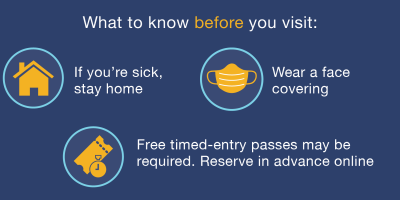
The safety of the Smithsonian's visitors, volunteers, staff, and collections is of the highest importance. As the nation's most beloved collection of museums and galleries, we work hard every day to ensure the preservation of our country's treasures for the enjoyment of generations to come.
Know Before You Go: Guidelines for Visiting
We ask that all visitors, including those who have been vaccinated against COVID-19, follow these safety measures to protect everyone’s health. Visitors who do not adhere to safety policies and guidelines may be asked to leave.
If Sick, Stay Home
We’re asking all visitors who are sick or feel unwell to please stay home. If you are at increased risk of severe illness, you may also want to consider staying home.
Face Coverings
All visitors ages two and older are required to wear a face covering while visiting Smithsonian locations in indoor spaces regardless of vaccination status. Face coverings may be removed while eating or drinking in designated spaces.
Face coverings should fit properly, covering the nose, mouth, and chin with no large gaps on the outside of the face, and they should have at least two layers. Face shields are not permitted as a substitute for a face covering but may be worn over a face covering or mask. Bandanas, single-ply gaiters and face coverings, and masks with an exhalation valve are not permitted.
Proof of Vaccination (New York City)
All visitors ages 5 and over are required to show proof of COVID-19 vaccination to visit New York City museums. ( See Key to NYC )
Proof of Vaccination (Washington, D.C.)
Museum and zoo entry.
Visitors are not required to show proof of COVID-19 vaccination to enter any Washington, D.C.-area museum or the National Zoo.
Indoor Dining
Per a Washington, D.C., mandate for indoor dining:
Beginning January 22: visitors 12 and older must show proof of having had at least one dose of a COVID-19 vaccine.
Beginning February 15: visitors 12 and older must show proof of full vaccination: one or two doses depending on the type of vaccine.
Note: Visitors placing to-go orders from cafes will not be required to show proof of vaccination.
Acceptable forms of proof of vaccination include:
- A CDC-issued vaccination card (or a photo of the card)
- Record of immunization from a health-care provider or public health authority
- A COVID-19 verification app (e.g., VaxYes, Clear, Excelsior, MyIR)
- World Health Organization Vaccination Record
Visitors 18 years and older must also show photo ID, such as:
- State-issued driver’s license or limited purpose driver’s license
- Any other state-issued identification card
- DC One Card
- Student ID
- Permanent resident card
Visitors may dine in without showing proof of vaccination if they provide documentation of a medical exemption (such as a doctor’s note) or a religious exemption (such as an attestation form); both exemptions must be accompanied by a negative result from a PCR or antigen test taken within the past 24 hours.
Social Distancing
We encourage visitors to maintain a safe social distance of six feet or more between households or groups at all times.
Please wash and sanitize hands frequently during your visit and practice good hygiene. Hand-sanitizing stations will be available throughout our facilities.
Personal Belongings
We encourage you to limit the number of personal belongings and bags you bring into our facilities as they will be subject to a thorough search. Limiting the items you bring will increase your speed through security checkpoints, helping us all maintain a safe social distance. Please note that we do not offer coat or bag storage.
When you visit any of the Smithsonian's buildings you will discover that we have security measures to ensure your safety and the safety of the objects contained within. At many of our museums, you'll be greeted upon entry by one of our security personnel who will conduct a thorough hand-check of all bags, briefcases, purses, and containers.
Visitors are required to walk through a metal detector at the following museums:
- Air and Space Museum and its Udvar-Hazy Center (DC & VA)
- African American History and Culture Museum
- American History Museum
- Natural History Museum
- National Postal Museum
- American Indian Museums (DC & NY)
Those who are unable to go through the metal detector will be hand-screened with an electronic wand by security personnel. Bag checks will be conducted by hand or via an X-ray machine.
We ask for your patience, cooperation, and assistance in keeping America's treasures safe.
We encourage you to limit the number of personal belongings and bags you bring into our facilities as they will be subject to a thorough search. Limiting the items you bring will increase your speed through security checkpoints, helping us all maintain a safe social distance. Please note that we do not offer coat or bag storage. Visitors should not leave personal belongings unattended.
No accommodations are available for eating bag lunches within the museums.
Many items are prohibited at all Smithsonian museums. Do not bring sharp items into the museums such as knives (including pocket or "Swiss Army" style knives), screwdrivers, scissors, etc. Other items not permitted include firearms, pepper spray, and Mace.
Photography
The Smithsonian permits still and video photography for noncommercial use only in its museums and exhibitions, unless otherwise posted.
For the safety of our visitors and collections, the Smithsonian prohibits the use of tripods, monopods, selfie sticks or similar devices in our museums and gardens. This is a preventive measure to protect visitors and objects, especially during crowded conditions. We encourage museum visitors to take selfies and share their experiences—and leave the selfie sticks in their bags.
Working members of the media who need to use a tripod or monopod must obtain permission from the museum's Public Affairs Office and must be escorted by a museum staff member while in the building or garden.
Smoking is prohibited in all Smithsonian facilities.
Service animals are welcome in the museums and the National Zoo. Under the Americans with Disabilities Act (ADA), a service animal is defined as a dog that has been individually trained to do work or perform tasks for an individual with a disability. Pets are not permitted.
Prohibited Conduct
Visitation policies at the Smithsonian Institution are designed to protect visitors and staff as well as secure and preserve the collections, facilities, and historic buildings entrusted to the Smithsonian's care.
While on Smithsonian premises NO VISITOR SHALL:
- Carry firearms, other dangerous or deadly weapons, or explosives, either openly or concealed on the premises. The prohibition on firearms applies to all visitors, including those with firearm permits, but not to active law enforcement personnel authorized to carry firearms.
- Display or carry placards, signs, or banners
- Destroy, damage, or remove property
- Climb upon any part of a building
- Use loud, abusive, or otherwise improper language
- Loiter, sleep, or participate in unwarranted assemblies
- Create any hazard to persons or things
- Perform obscene or indecent acts
- Engage in disorderly conduct
- Use, possess, or sell illegal drugs
- Bring dogs or other animals, other than service animals
- Take photographs for advertising or any other commercial purpose
- Solicit for commercial or charitable purposes or distribute advertisements, pamphlets, handbills, and flyers
In addition to the above, while on Zoo premises, NO VISITOR SHALL:
- Kill, injure, or disturb any exhibit or research animal by any means except to secure personal safety
- Pet, attempt to pet, handle, move, or remove exhibit or research animals
- Feed exhibit or research animals, except in strict accordance with authorized signs
- Catch, attempt to catch, trap, remove, or kill any free roaming animals inhabiting the premises
- Go over, under, between, or otherwise cross any guardrail, fence, moat, wall, or any other safety barrier
- Seat, stand, or hold children over any safety barrier
- Throw or toss rocks, or any other missiles into, from, or while on premises
- Bring strollers, baby carriages, or other conveyances, except wheel chairs, into exhibit buildings and public restrooms
- Engage in ball games, or any athletic activity, except in places as may be officially designated for such purposes
- Smoke or carry lighted cigarettes, cigars, or pipes into exhibit buildings, or to have a fire of any kind on the premises
- Damage, deface, pick, or remove any herb, shrub, bush, tree, or turf, or portion thereof
Visitors who violate these rules may be subject to fine or imprisonment. The complete Smithsonian buildings and grounds regulations can be found in Title 36 of Code of Federal Regulations, parts 504 and 520 (National Zoo).
- Hours and Admission
- Museums and Zoo
- Accessibility
Quick Links
- Visitor Guide and Map (PDF)
- Mall Museum Map
- Mall Bicycle Rack Map (PDF)
- Metro Rail and Bus
- ParkWhiz: Book parking
- DC Circulator National Mall Service
- Capital Bikeshare
National Museum of Natural History Virtual Tours
Access the tours.
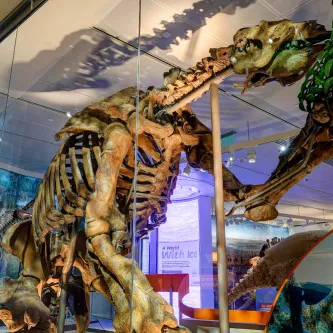
The Smithsonian National Museum of Natural History virtual tours allow visitors to take self-guided, room-by-room tours of select exhibits and areas within the museum from their desktop or mobile device. Visitors can also access select collections and research areas at our satellite support and research stations as well as past exhibits no longer on display.
Virtual Tour Tips
- To navigate between adjoining rooms in the tours, click on the blue arrow links on the floor or use the navigation map in the upper right of the presentation screen.
- Look for the camera icon which gives you a close-up view of a particular object or exhibit panel.
- Try zooming in as some of the images are stitched together from individual pictures in order to create very high resolution gigapixel images.
Please note: This tour and these presentations have been tested and should work on all common devices, browsers, and operating systems (using a desktop computer with Windows, Mac, Linux or a mobile device such as an iPhone, iPad, or Android). Functionality and appearance may vary as it will adjust automatically to accommodate the most visitors. While the virtual tour has no advertising, ad blocking software or browser settings that block JavaScript and/or XML may interfere with the functionality of the virtual tour. Please let us know what you think of the tour and how the experience can be improved. Send your feedback to the NMNH Web Team .
Site Credit: Imagery and coding by Loren Ybarrondo
Equipment Used: Professional Nikon digital single-lens reflex (DSLR) camera bodies and lenses. The photography is typically done using rectilinear lenses with minimized distortion and shooting equirectangular panoramas at 22K pixels on the long side.
Software Used: No authoring software is used. The tours are hand-coded in HTML5 and JavaScript using the krpano graphics library.
- Smithsonian Institution
- Terms of Use
- Privacy Policy
- Host an Event

Ultimate Guide To Visiting The Smithsonian Tips
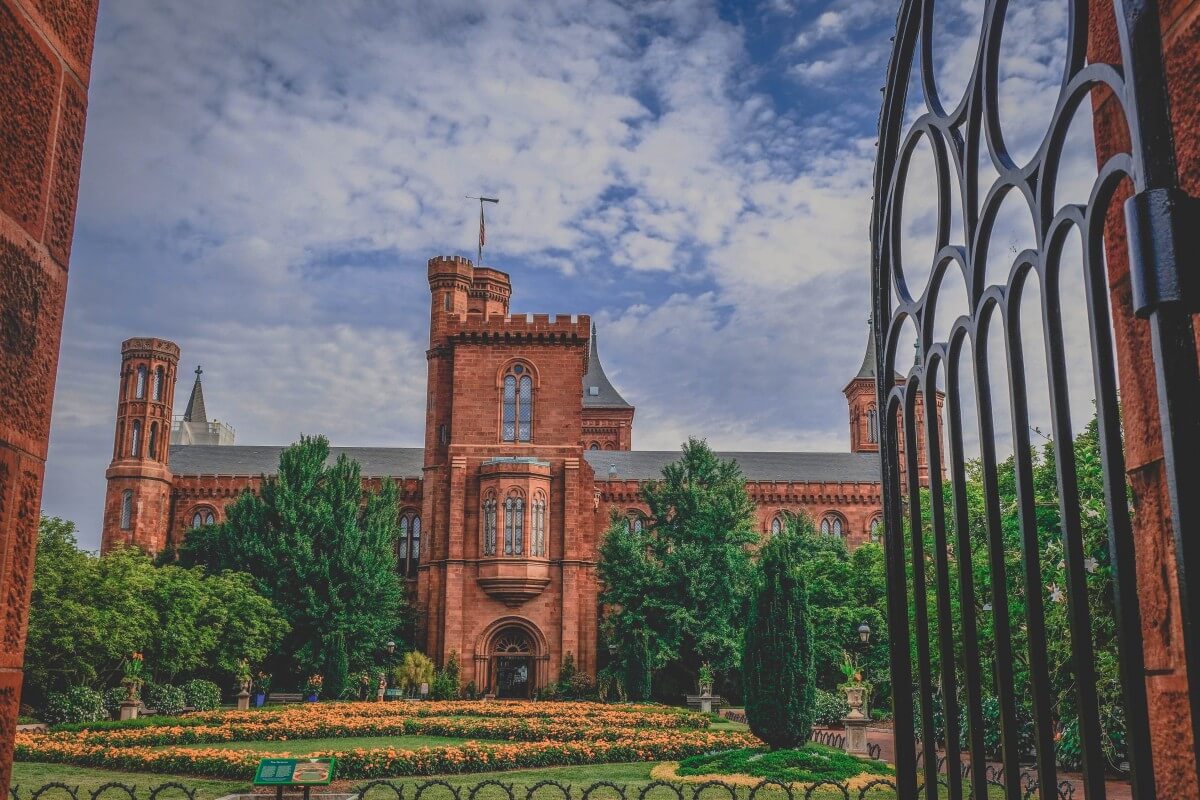
Growing up in Virginia, I ended up visiting the Smithsonian Institution a lot (like for every class trip, after-school trip, and weekend trip – y’all, Northern Virginia schools only have one go-to field trip idea).
I lived in a small(ish) town in NOVA , went to school roughly fifteen minutes from DC, and was a museum geek.
So (unsurprisingly) in elementary school and middle school, when my mum was done with work, we’d visit the Smithsonian together. And by the time high school rolled around, I practically lived at the Smithsonian ( I used to pretend to be a tour guide at the National Museum of Natural History – a cringe-worthy part of my life I’m trying to forget ).
But I hands-down love the Smithsonian Institution . Every time I go back, I immediately feel at home.
I’ve been to all twenty complexes, including the two in New York, and to every one of them at least a dozen or so times.
In this guide, I’m going to be spilling all my top tips for visiting the Smithsonian!
Table of Contents
Smithsonian Travel Guide
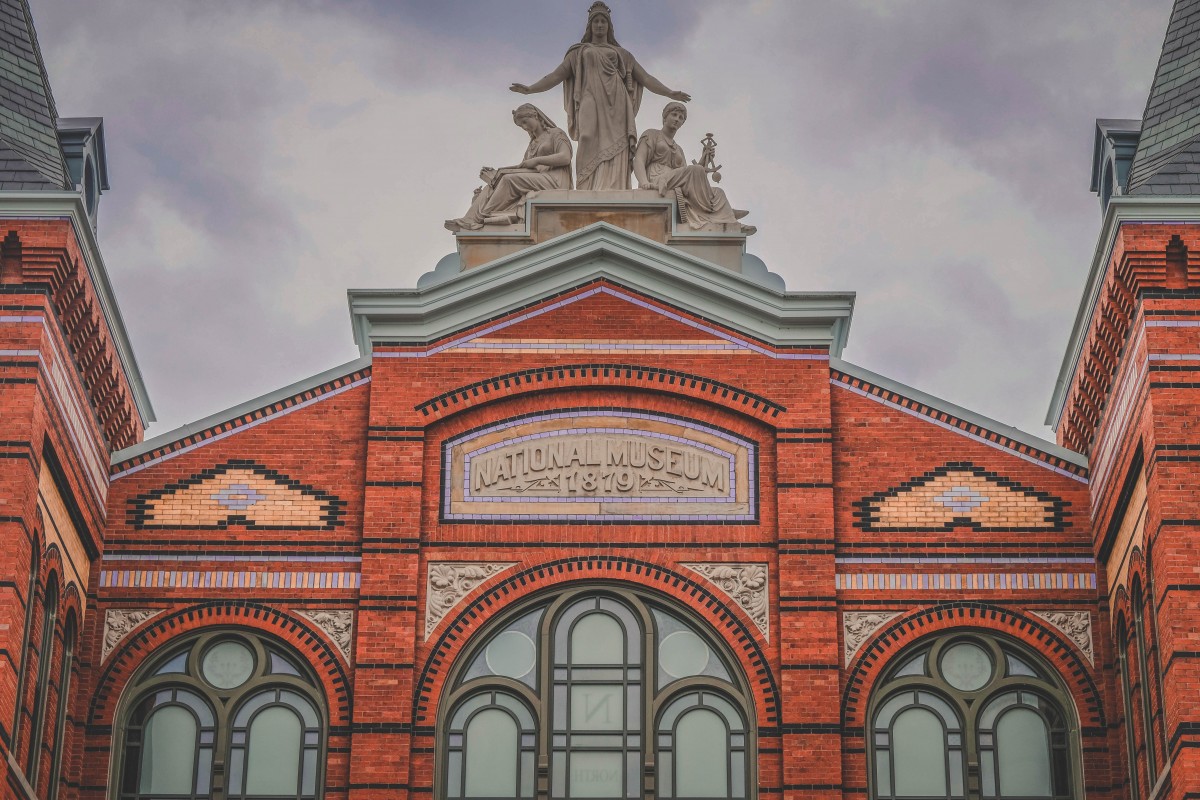
The Smithsonian Institution is a cluster of museums and research buildings on the East Coast.
Each year, roughly 28 million people visit the Smithsonian, making it one of the most popular cultural centers in the United States.
How Do You Get To The Smithsonian?
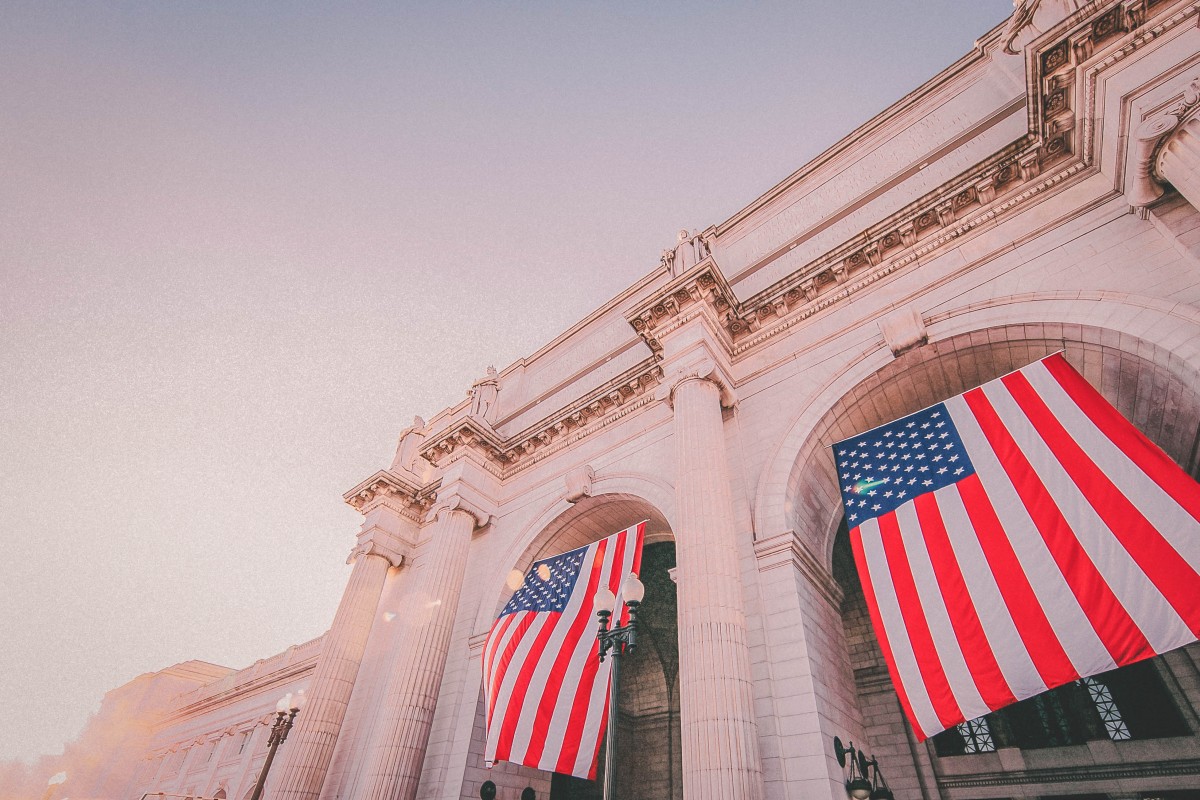
It’s really hard to find good parking near the Smithsonian ( especially for the museums by The Mall ).
Although D.C. follows an easy to understand grid system, driving in-and-around the city is not my favorite thing on the planet. Metered parking is expensive ( unless you are planning on visiting the Anacostia Community Museum ).
Parking at the National Zoo itself is $25 ( yikes )!
As a result, my favorite way to travel around D.C. is by metro.
You’ll need a metro pass ( which you can purchase at the station ). The metro stops by the main museums on the blue, green, orange, and yellow lines. I usually hop off the metro at the closest stop and walk from there.
Complete List Of Smithsonian Buildings
- African American Museum
- African Art Museum
- Air And Space Museum
- Air And Space Museums Udvar-Hazy ( Virginia )
American Art Museum
- American History Museum
American Indian Museum
- American Indian Museum Heye Center (New York)
- Anacostia Community Museum
- Archives Of American Art
- Cooper Hewitt ( New York )
Freer Gallery Of Art
- Hirshhorn Sculpture Garden
National Zoo
- Natural History Museum
- Portrait Gallery
- Postal Museum
- Renwick Gallery
- S. Dillon Ripley Center
- Sackler Gallery
- Smithsonian Castle & Gardens
Top 10 Smithsonian Museums To Visit
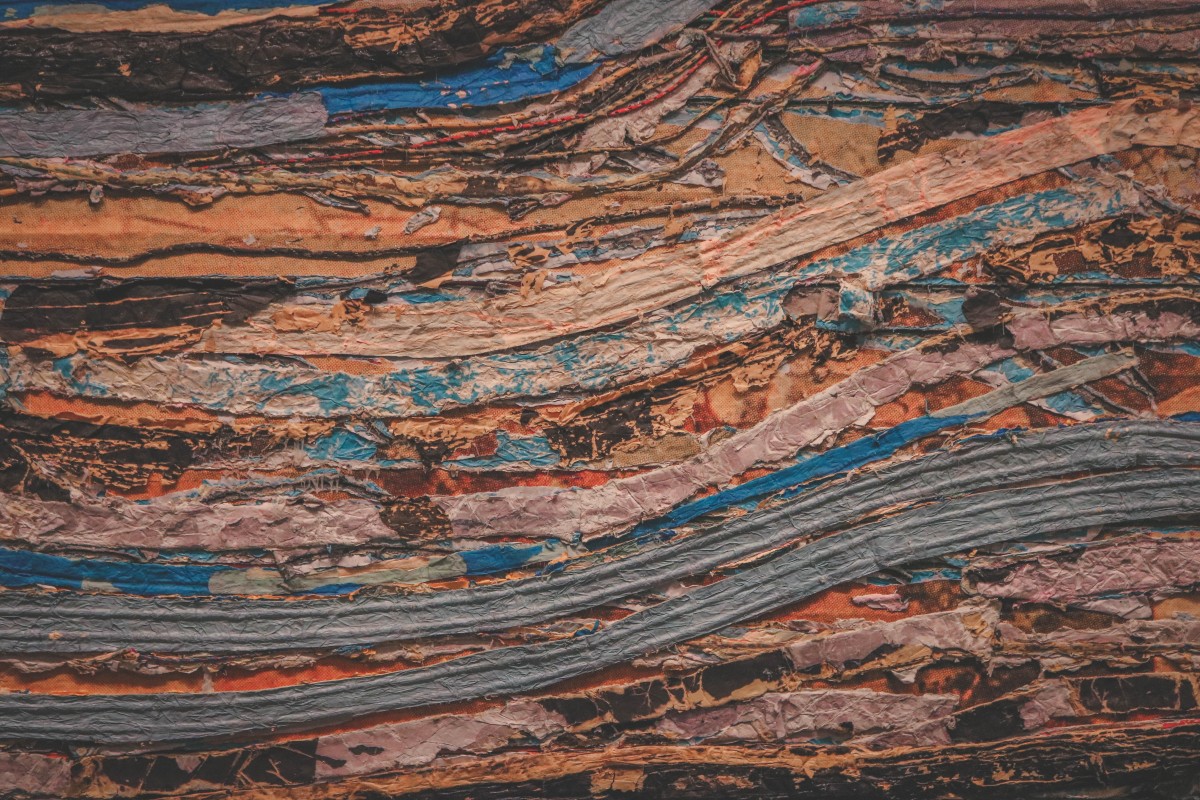
Over the years, I’ve definitely developed a soft spot for certain museums. Here are my personal favorites ( in no particular order ).
Smithsonian National Museum Of African Art
The African Art Museum is easy to miss. It’s right behind The Castle in a small square building topped by a blue dome. Inside is traditional African art – classic wooden statues that play on proportions, oil paintings that manipulate mood, vivid colored works cut to extravagant detail.
The museum is small so if you want a slower-paced visit ( where you don’t feel rushed to see everything ), this is one of my top picks!
National Museum Of Natural History
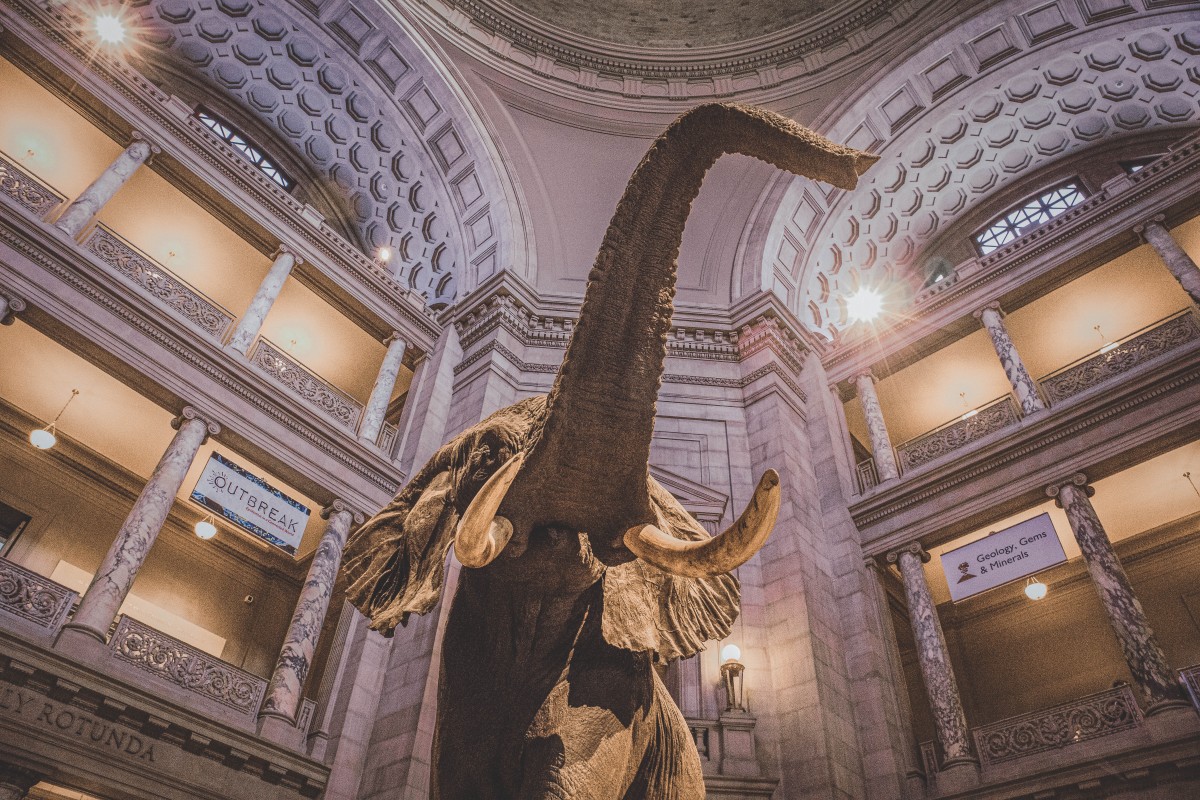
By far my favorite museum in the Smithsonian Collection is the National Museum of Natural History.
You’ll need an entire day ( or two ) to see this museum ( it is h-u-g-e ). And the exhibits vary from historic to art-focused to straight-up insect pavillions.
Travel Tip: You can take a virtual tour of the National Museum Of Natural History.
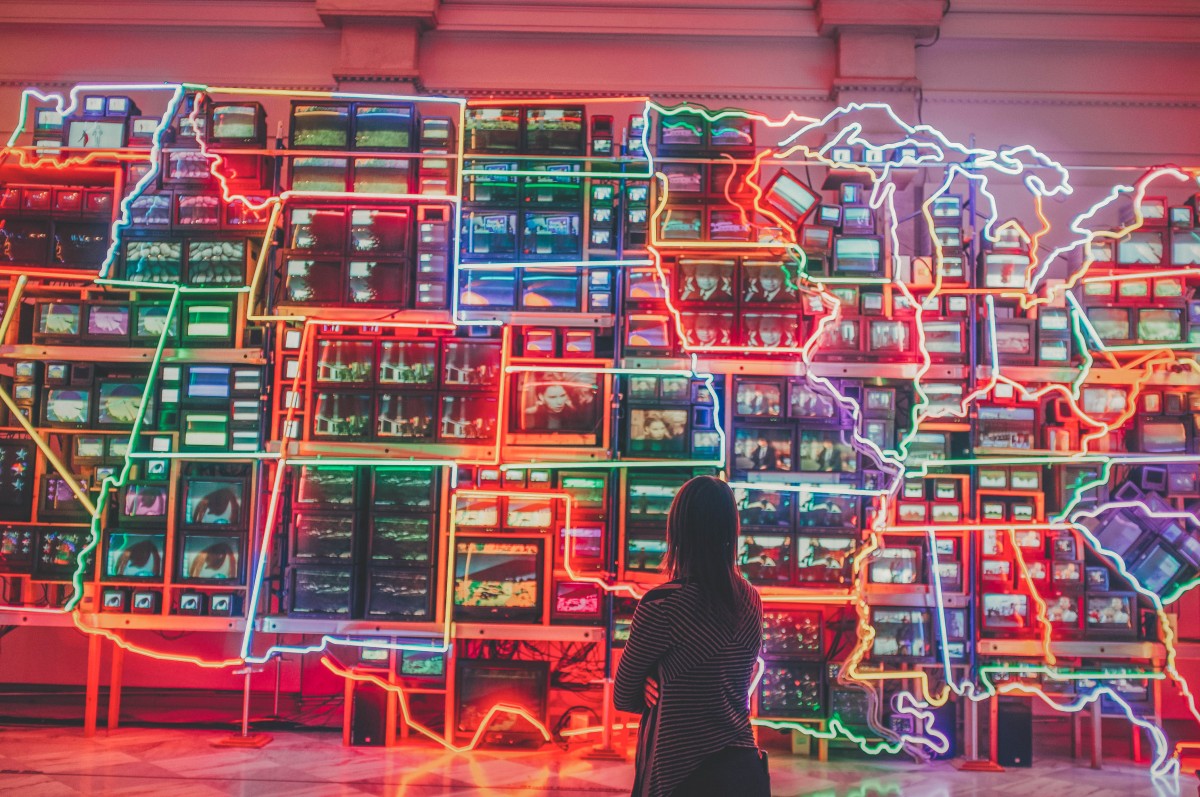
The interior of the American Art Museum feels like a time warp – extremely modern and charming at the same time.
Museums get a bad rap for being old, stuffy buildings, but the American Art Museum really slashes that stereotype. It’s incredibly photogenic .
P.S. One of my favorite oil paintings of all time, “Cape Cod Morning” by Edward Hopper is on the South Wing of the first floor. Despite the cheerful colors, it is stark and slightly broody, which is why I love it.
P.P.S. The National Portrait Gallery and American Art Museum are in the same building (so you can visit both whilst there).
My mum used to work five minutes ( by foot ) from the Freer Gallery Of Art so this is the Smithsonian Museum I ended up visiting the most ( so I’m a little biased when I say it is one of my favorites ).
Freer focuses on Asian Art . And the best exhibit ( though, they’re all good ) is the Peacock Room – an entire wall colored jade, shelves of bright vases, gold paneling.
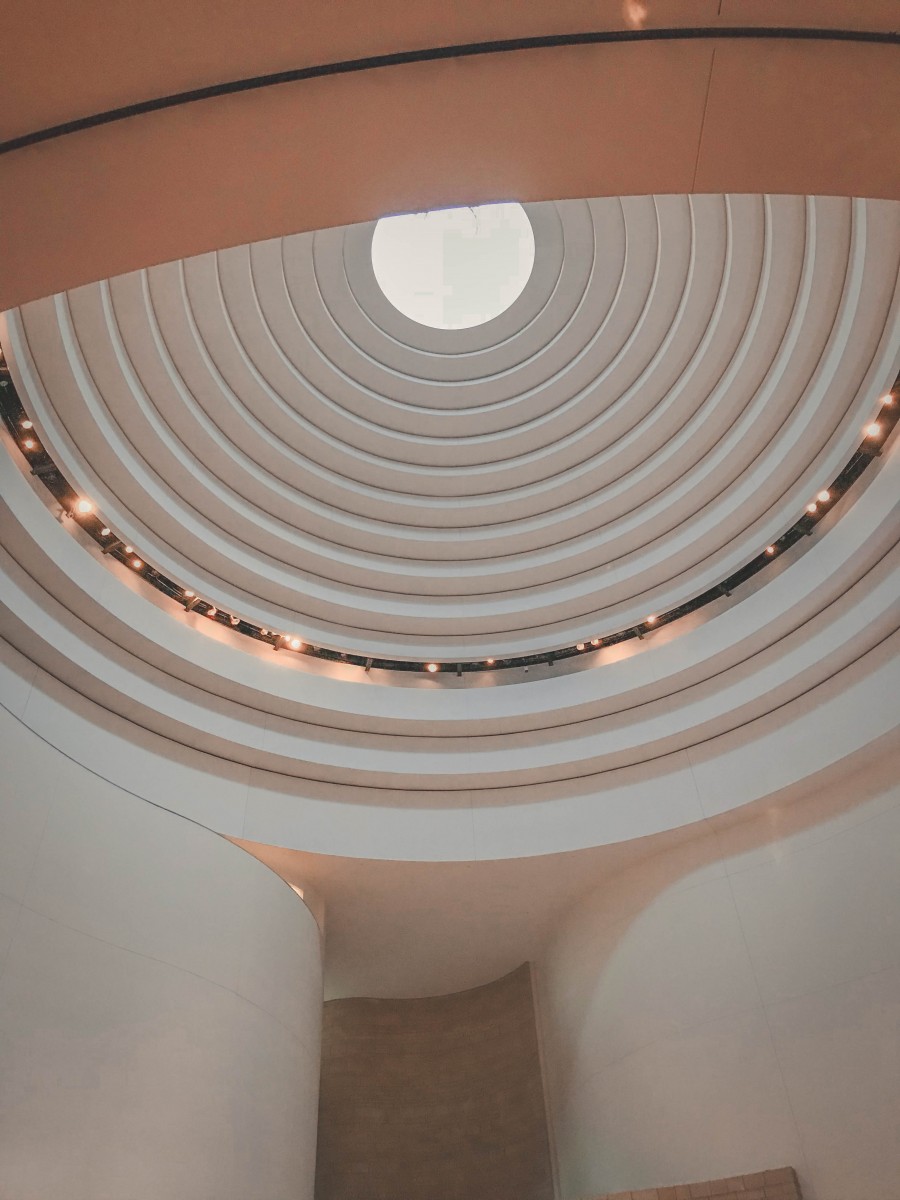
The American Indian Museum is my favorite museum architecturally . The building is beige and built to look like a ripple. The curved walls are layered like waves. It’s all-things modern, but the thin blocked windows are reminiscent of the distinctive Pueblo adobe-home style.
P.S. This museum has the best gift shop out of all the Smithsonian complexes ( the gift shop feels like an exhibit unto itself ).
American Museum Of National History
This is one of the lesser-visited Smithsonian Museums ( lots of tourists get it mixed up with the Natural History Museum and skip it, thinking they’ve already visited) .
The American Museum of National History is home to the star-spangled banner, but there are lots of other exhibits ( about everything from food during war times to women’s history stories ) that are worth seeing.
While I’ve stopped visiting zoos ( for environmental reasons ), I loved visiting the National Zoo as a kid ( so much so that it still warrants a mention ).
From the Cheetah Conservation Station to the Think Tank to Amazonia , there are so many animals here ( I actually wrote a book when I was eight based on what I observed at this zoo. It was just as terrible as you’d expect and I’m so incredibly grateful it remains unpublished, collecting dust in my parent’s house ).
National Museum Of African American History
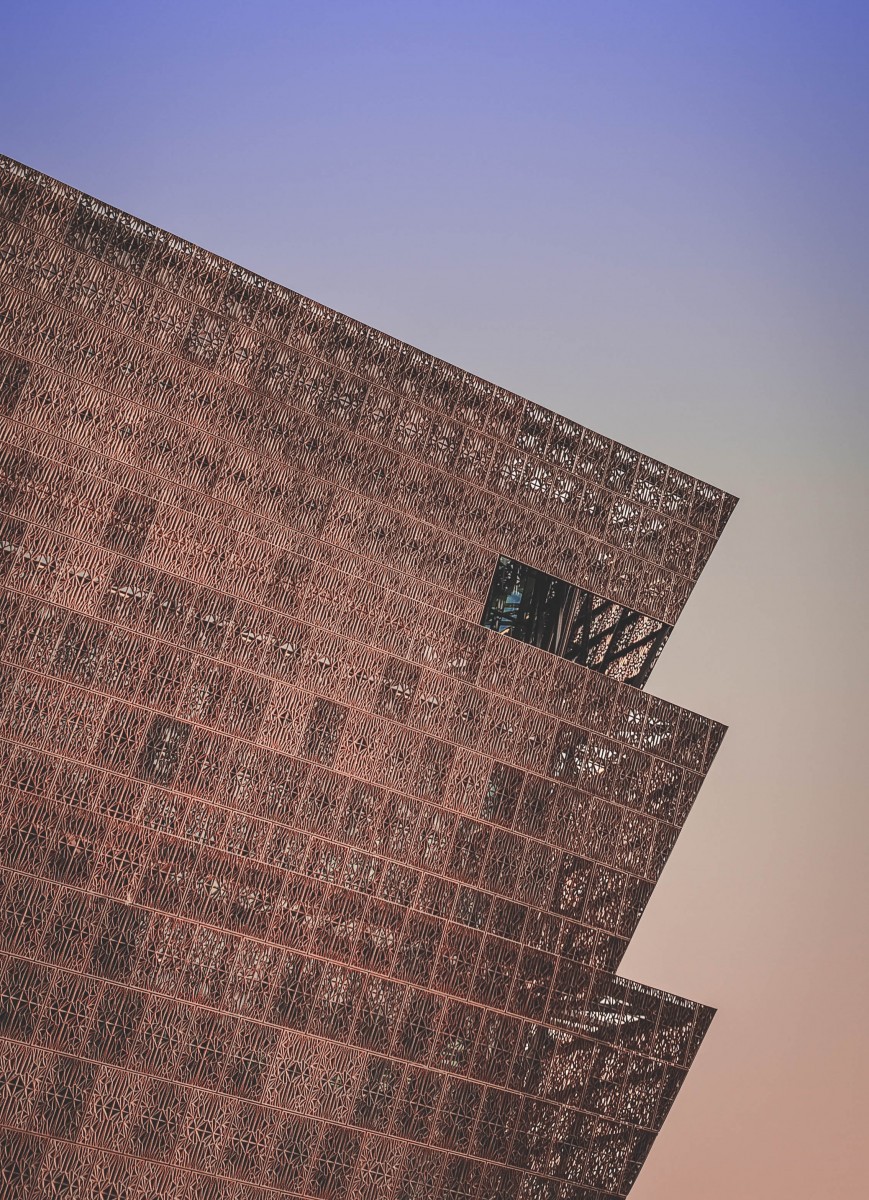
This museum was under construction while I lived in Virginia so I only got a chance to see it during my most recent trip to the Northeast ( a few days after visiting Philadelphia ).
And it’s now one of my favorites. To make the most of your visit, hit up the history exhibits first ( before heading to the L-level community galleries ).
10 Travel Tips For Visiting The Smithsonian
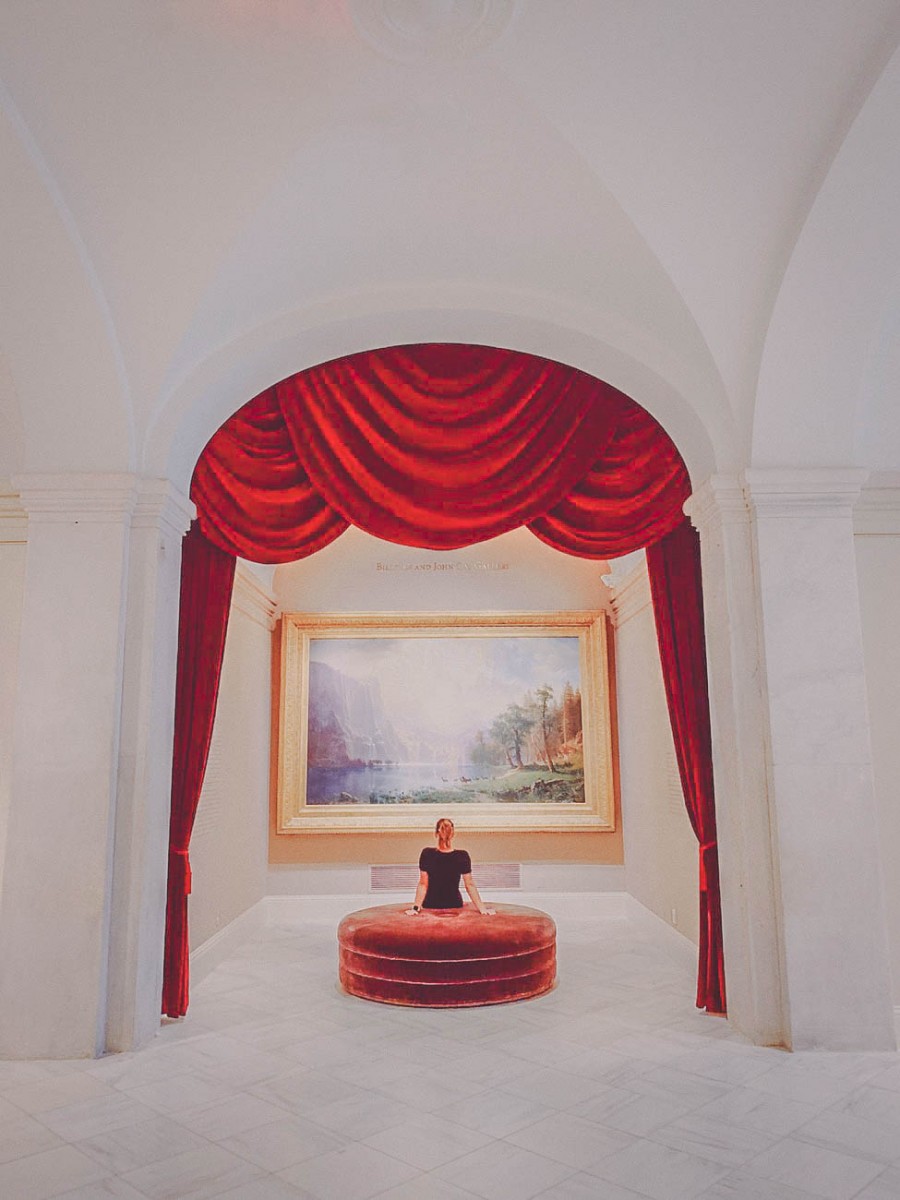
- Although you can’t bring food into the museums, you can bring bottled water ( which I highly recommend because the museums are gigantic and you’ll be walking a lot ).
- You’ll want to plan for a max of two museums a day ( just to take in the whole experience ).
- And you don’t have to visit every museum! Just visit the ones you are truly interested in ( it took me a full year to see them all as a quasi-local so if you only have a weekend, don’t stress out ).
- The Hope Diamond is the Natural History Museum’s premier display and it gets off-the-walls crowded ( so head there first, when the museum opens at 10 AM, then make your way around the rest of the floors ).
- The National Postal Museum is a bit further away so it gets very few visitors, but it’s also one of the coolest museums to visit if you love stamp collecting ( they sell gorgeous stamps in their gift shop too ).
- A few of the museums have IMAX theatres. With the exception of the Udvar Hazy Museum ( hint ), these get really crowded ( to guarantee good seats, try to select a documentary-style movie versus big-budget screenplay ).
- Street food right outside the museum is much cheaper ( and better ) than what’s served inside.
- The best time to visit is early in the week ( Mondays, Tuesdays ) in the fall, winter, or spring.
- Empty your pockets before the screening ( and try to pack light ) to streamline the security process.
- The National Gallery of Art has a gelato bar. You can thank me later ( just kidding. but seriously, I hope you enjoy it as much as I do ).
Did you find this guide to visiting the Smithsonian (plus Smithsonian tips) useful? Let me know your top Smithsonian tips for visiting the Smithsonian in the comments below!
Editor-In-Chief
Anshula grew up with a love of stories and places. Thirty-five states and 100 bookstores later, she's made her hobbit home in Middle Tennessee. Her Tookish side still takes over and leaves her chasing window seats, literary destinations, adventure books, sunrise coffee, and indie bookshops. She's appeared as a travel source on HuffPost, Reader's Digest, and MSN.
Related Posts
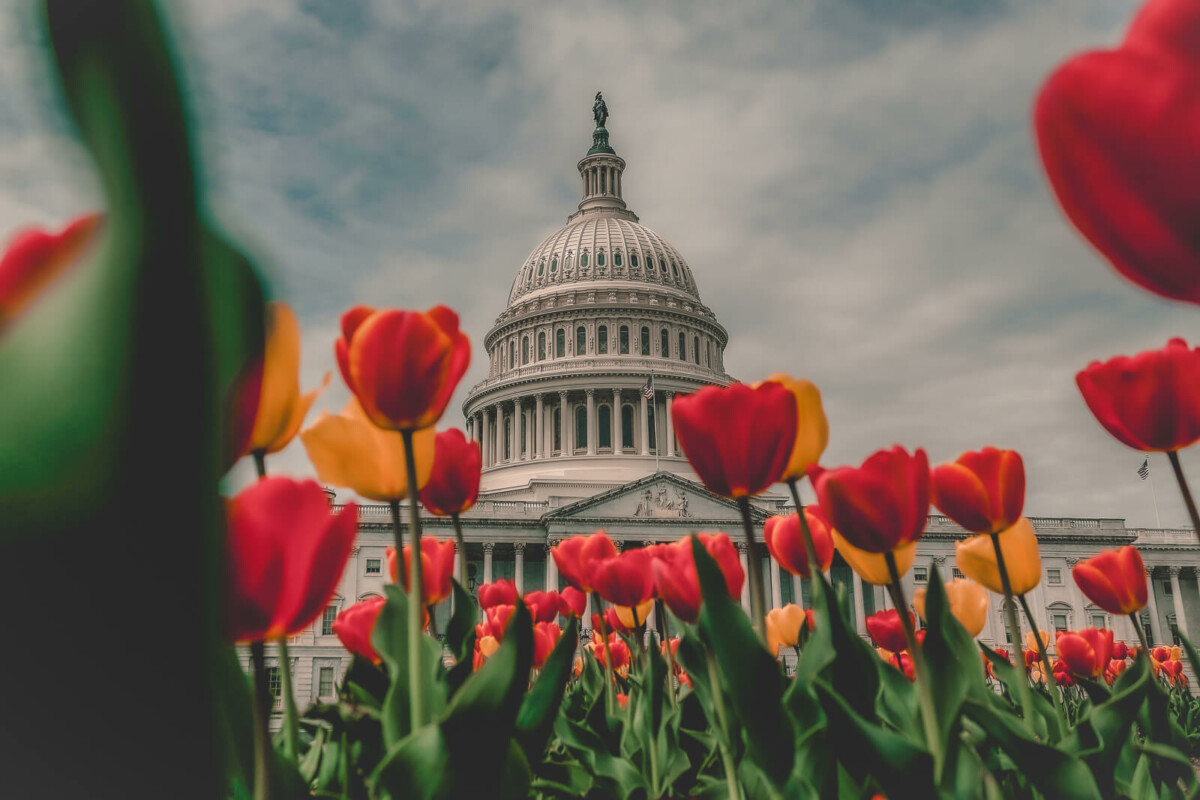
Best Time To Visit Washington DC (2024)
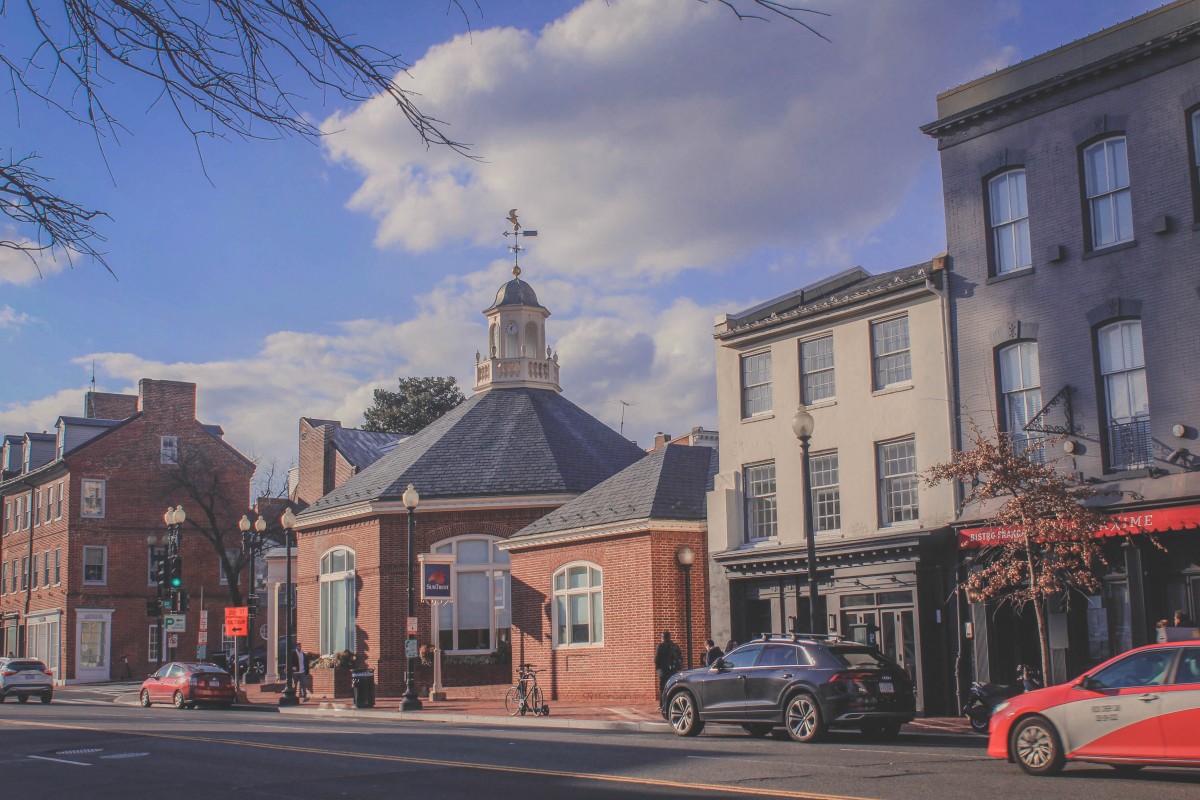
Top 10 Things To Do In Georgetown DC
35 comments.
Quite a tour. Thank you for sharing it.
Thank you! I’m glad you enjoyed it!
Awesome post! I haven’t gotten to the smithsonian yet, but will save this post for future-lots of good tips!
Thanks! I used to live near DC, so I ended up visiting quite a bit 🙂
Love this! I had no idea there were so many different parts of the Smithsonian.
Oh, yes! There are actually several other parts – the Postal Museum and the American History Museum, just to name two, but they never had a huge impact on me, so I left them out of the list.
This will be on my list of places to see now! Thanks for the tips 🙂
Yay! I’m so glad you found my guide to the Smithsonian useful 🙂
First of all, I love your writing! Very fun to read. And I went to the Smithsonian several years ago but didn’t have enough time to go through all the museums. I definitely want to go back!
Thank you so much! I’m excited to know that you’ve visited some of the museums as well! Which ones did you visit?
This is a great post! I live in the DC area and absolutely love going to the Smithsonian(s). This post is what I aspire to right about! Lovely writing voice, too! Subscribing. 🙂
Thank you! That means so much to me! What is your favourite Smithsonian institution? P.S. I think it’s amazing that Dave Grohl inspires you to write 🙂
Thank you! I think my favorite is a toss up between the Zoo and the Air & Space Museum. Both are so great, but so different!
Yes! My personal favourite is the Zoo, but I love the Air & Space Museum as well (it’s the most visited for a very good reason).
Hi Anshula! Love this post!I really like you pics of the beautiful flowers and national zoo.Very helpful guide and great tips.
Thank you so much! I’m glad that you found it helpful!
Great post! Bookmarking for future travels 🙂
Wow! I had no idea on the history. Fab tips Anshula 🙂
Thank you so much! The history is kind of swept under for the most part. No ones like to admit that Smithson pretty much just donated money to upset his father, but I’ve always found it fascinating.
I would love to get there soon! It’s been on my list for awhile now! Awesome info! This will definitely be useful whenever I go 🙂
Thank you so much! I’m so happy that you found my little guide useful 🙂
Great post! We love all things Smithsonian! It inspired my daughter so much that she has decided to become an archaeologists. On a side note: I’m totally jealous of those hydrangeas!
That’s amazing! PS: I wish I had Smithsonian-level hydrangeas too.
I’ve never been to the Smithsonian but I have always heard some incredible things. I’ll be sure to check it out the next time I’m in Washington!
The Smithsonian is wonderful! It is definitely a Washington bucket list item!
Love the infograph. Such a great idea. The botanical gardens look amazing! I could spend a day there!
I’m so glad you liked the infograph! The Botanical Gardens are indeed amazing (I’ve been there six times already and I still want to go back)!
Really great guide to the Smithsonian! Makes me really want to go! My favourite museum might be the ROM (Royal Ontario Museum). I went there when I was a kid, and I remember I loved it so much. It was huge and had so much in it!!
I’ve never been to the Royal Ontario Museum, but I just googled ROM and it looks architecturally astounding! That geometry is crazy! I’m definitely adding it to my bucket list!
i’ve always wanted to go! it’s on my list for soon.
You should go if you’re in D.C.! Visiting the Smithsonian is a great way to spend a day or two or three 😉 Every time I revisit, I manage to find something new.
Oh, we’ve spent only 4 days in Washington, D.C., but loved the Smithsonian so much! Te castle is so beautiful and we ended up spending 1,5 days of our 4 in the Natural History Museum alone. We have to go back one day, it’s so much to see there. And your pics about the botanical gardens are quite tempting… 😀
There is so much to cover in the Natural History Museum. I still don’t feel like I’ve covered it all (and this is coming from a girl who spent fourteen days there). Yes! Definitely see the botanical gardens the next time you go. Did you visit any other institutions on the other three days? What else did you see?
Haha, we believe you! We mostly visited the attractions of the National Mall during our stay in DC and honestly, we haven’t really planned to spend much time in any of the Smithsonian museums, but we just couldn’t resist the temptation in the end. But we did it right. 😀 We briefly visited the National Museum of American History, too, but that was really just a couple of hours before closure.
Leave a Reply Cancel reply
Your email address will not be published. Required fields are marked *
Notify me of new posts by email.
What are you looking for?

The Ultimate Guide to the Smithsonian Museums
“Can we visit the Smithsonian?” It’s a common question I get asked when people visit me from other states. But the Smithsonian isn’t just a single place that you can visit in a day! The Smithsonian Institution includes 21 museums plus the National Zoo making it the largest museum, education, and research complex in the world. Most of the museums are on the National Mall in Washington, DC plus two in New York City and one in Chantilly, VA. So, it’s going to require some time to visit everything! That said, the Smithsonian museums are a great way to spend any kind of day in the city. They are perfect for first-time tourists, locals, and escaping any kind of harsh weather.
If you are visiting DC or guiding out-of-town friends, remember that bucket list item to “visit the Smithsonian” might take a little more planning for someone who didn’t realize how big it is. This guide will break down the 21 museums and give you a sense of what you’ll see when you visit.
Visit the Smithsonian Museums on the National Mall
Smithsonian gardens.
- Independence Ave SW
- L’Enfant and Smithsonian
- Recommended time: 1 to 2 hours
- No tickets required
The Smithsonian Gardens are behind the Smithsonian Institution Building, affectionally referred to as The Castle. The Castle is a great place to start your trip as it is home to the Smithsonian Visitor Center. While you are there, make sure you take photos of The Castle and visit the garden in the back. You’ll find the Enid A. Haupt Garden, Moongate Garden, and Kathrine Dulin Folger Rose Garden. The gardens change with the seasons and make great backgrounds for photos year-round.
The gardens are walkable from 2 metro stops: Smithsonian & Federal Triangle (orange, blue, silver) and L’Enfant Plaza (green, yellow, orange, blue, silver). Open daily except Christmas.

National Museum of Natural History
- 10th Street and Constitution Ave NW
- Free ($8 for the Butterfly Pavillion)
- Smithsonian, Federal Triangle, Archives
- Recommended time: 2 to 4 hours
The National Museum of Natural History is one of the most recognizable of the Smithsonian museums due to the large African Elephant in the lobby. You’ll find larger-than-life exhibits, including the Hall of Fossils (lots of dinosaurs), Ocean Hall, and the Hall of Geology, Gems, and Minerals (including the Hope Diamond). Plus, don’t miss the smaller natural world with the Insect Zoo and Butterfly Pavilion.
This museum is great for all ages, but it is also a particularly good place to start if you are traveling with children. There is so much to see, and a lot of it is interactive. Because of the sheer size of many exhibits, it’s easy to keep short attention spans interested and fill an entire afternoon. For extra fun, check out the Butterfly Pavillion with live butterflies. It’s open Tuesday to Saturday, and tickets are $8/adult or free on Tuesday. Plan for 2-4 hours.
The Museum of Natural History is easily walkable from three metro stops: Smithsonian or Federal Triangle (orange, blue, silver) and Archives (green, yellow). Open daily except Christmas Day. Timed tickets are not required.

National Museum of American History
- 1300 Constitution Ave NW
- Recommended time: 1 to 4 hours
Many of the Smithsonian museums cover aspects of our country’s history, but the Museum of American History is a great place to start. This museum usually features a variety of rotating exhibits to cover as much history as possible throughout the year.
Ongoing exhibits include American Democracy, The First Ladies, Food: Transforming The American Table, and The Star Spangled Banner: The Flag that Inspired the National Anthem. The Museum of American History is great for all ages but might be better for kids and teens with some context for history through school.
National Museums of African American History and Culture
- 1400 Constitution Ave NW
- Smithsonian, Federal Triangle
- Recommended time: 4 to 6 hours
- Tickets required
The Museum of African American History and Culture opened in 2016 and remains among the most popular Smithsonian museums. You can easily spend an entire day exploring this museum. Generally, the museum covers early American history on the lower flowers and works its way up to the present day. If you only have a few hours, I recommend selecting a few museum sections, including the two lower floors or the pop culture exhibits on the top floor. You’ll find everything covering slavery and freedom, sports, pop culture, visual arts, and more.
Timed tickets are required to visit the Museum of African American History. They are available for groups up to 6 people 30 days in advance on a rolling basis. The museum is walkable from 2 metro stops: Smithsonian and Federal Triangle (orange, blue, silver). Open daily except Christmas.
National Museum of African Art
- 950 Independence Ave SW
The National Museum of African Art features both traditional and contemporary art representing the entire continent. Current ongoing exhibits include Currents: Water in African Art and Visionary: Viewpoints of Africa’s Arts. This is a great museum to stop at if you are short on time but want to see a museum during your time on the National Mall. Not only is the museum on the smaller side but it tends to be less crowded. Even if you only have an hour or so, you’ll have room to spend as much time as you’d like with each piece.
The museum is walkable from 2 metro stops: Smithsonian (orange, blue, silver) and L’Enfant Plaza (green, yellow, orange, blue, silver). Open daily except Christmas.
National Museum of Asian Art
- 1050 Independence Ave SW
The National Museum of Asian Art includes the Freer Gallery of Art and the Slacker Gallery. The art collections across both galleries include more than 45,000 objects from the present day, dating back to Neolithic times. You’ll find pieces from China, Japan, Korea, South and Southeast Asia, and the Islamic World. It is also home to the world’s largest collection of works by James McNeill Whistler. Walking tours are available at 1:00 pm from Thursday to Sunday.
This museum is also smaller than some of the other Smithsonian museums and can still be appreciated if you are short on time. Or pair it with the National Museum of African Art right next door for a longer day of art appreciation.
Hirshhorn Museum
- 7th Street and Independence Ave SW
- Recommended time: 1 to 3 hours
- Tickets required for select exhibits
The Hirshhorn Museum features modern and contemporary art. You can visit anytime, but some of the more popular temporary exhibits require timed passes. Always check the website before you go to see what is on display. Also, don’t miss the sculpture garden right outside the museum with sculpture and water features. You can also visit the notable cafe with coffee and small snacks.
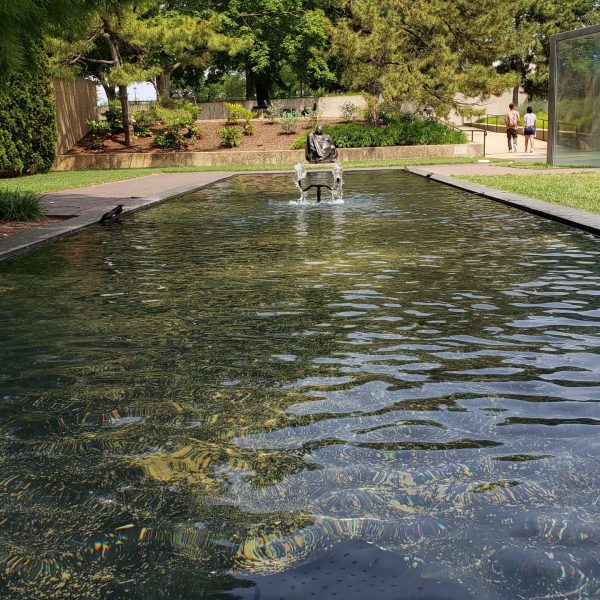
The Air and Space Museum
- 600 Independence Ave SW
- Free but there is an extra cost for the planetarium
The Air and Space Museum in Washington, DC, was recently renovated in 2022 and features a variety of exhibitions from The Wright Brothers, the first trip to the moon, and exploration of other planets. This museum requires free timed passes to visit, released in 6-week blocks. While the exhibits at the museum are free, you may want to consider a planetarium show which is $9 per adult. (The planetarium is closed until March 10, 2024 for renovations.)
National Museums of the American Indian
- 4th Street SW
- L’Enfant, Smithsonian, Federal Center
- Recommended time: 2 to 3 hours
The National Museum of the American Indian is home to one of the most expansive collections of Native artifacts. Like the African American History Museum, this museum has a wide variety of exhibitions covering both the extensive history of the American Indians and their impact today. One of my favorite exhibits is the powerful Americans exhibit highlighting Native American images used in pop culture. Connecting rooms dive deeper into the truth behind 3 widely known but frequently misunderstood historical events including the story of Pocahontas, the Trail of Tears, and the Battle of Little Bighorn. The Mitsitam Cafe is known to have some of the most interesting options among the museum cafes on the National Mall. The menu is divided into different regions with dishes representing native tribes across the continent.
The museum is walkable from 2 metro stops: Smithsonian & Federal Triangle (orange, blue, silver) and L’Enfant Plaza (green, yellow, orange, blue, silver). Open daily except Christmas.
Renwick Gallery
- 1661 Pennsylvania Ave NW
- Farragut West and Farragut North
The Renwick Gallery is very close to the White House and is set a little farther away from the rest of the museums on the National Mall. This gallery is a branch of the American Art Museums that focuses primarily on contemporary art. It is on the smaller side but is highly visual with regularly rotating exhibits. Art lovers of all ages will find these exhibits fun and engaging.
Smithsonian Museums in Downtown DC
Portrait gallery.
- 8th Street and G Street NW
- Gallery Place – Chinatown
The Portrait Gallery is the only place you can see all the Presidential Portraits outside of the White House. Wandering through the progression of US Presidents not only highlights snapshots of American history but also highlights pop culture and art trends used to portray each one. Additionally, you’ll find paintings and photographs of notable people from various points in history. While portraits of early Americans are often limited to the wealthy and powerful, The Portrait Gallery is actively working to ensure all Americans’ stories are represented.
The Portrait Gallery is connected to the American Art Museum by a large covered courtyard. You can easily experience both in the same afternoon. Outside food is allowed, so you can grab a bite from a nearby restaurant to enjoy in the courtyard. The courtyard also has Wi-Fi and is a lovely place to spend a “work from home” day.
The museum is walkable to the Gallery Place – Chinatown metro stop (green, yellow, red). Open daily except Christmas.
The American Art Museum
The American Art Museum is home to one the largest and most inclusive collections of American art in the world. Collections include photography, paintings, sculpture, and more representing artists from a variety of backgrounds and cultures. Currently, you can see a special exhibit from self-taught American artists. Because it is located so close to the Portrait Gallery, visitors get to see both artistic interpretations of both the American people as well as American life and culture in the same afternoon.
Be sure to spend some time in the courtyard that connects the Portrait Gallery and the American Art Museum (mentioned above).
The museum is walkable from the Chinatown metro stop (green, yellow, red). Open daily except Christmas.
Smithsonian Museums Outside Downtown DC
Anacostia community museum.
- 1901 Fort Pl SE
The Anacostia Community Museum is a space in the Anacostia neighborhood that is committed to telling the overlooked stories of the city. Exhibits are meant to shed a positive light on the stories of people making the most impact toward creating a more equitable future for all. Highlighted issues include social, economic, and environmental opportunities for growth.
The museum is about a 30-minute walk from the Anacostia metro stop (green). Open daily except Christmas.
National Postal Museum
- 2 Massachusetts Ave NE
- Union Station
The National Postal Museum is committed to the preservation and study of postal history. Dive into postal history with a massive collection of stamps and a special look at baseball through the lens of postal history. Visitors can also learn about what happens once a letter is dropped in the mail and how letters, magazines, and packages have traveled for the past 200 years.
The museum is walkable from the Union Station metro stop (red). Open daily except Christmas.
Steven F. Udvar-Hazy Center
- 14390 Air and Space Museum Pkwy Chantilly, VA
- Free but parking is $15
- Parking on site
The Steven F. Udvar-Hazy Center is located outside the city in Chantilly, Virginia. It is an extension of the Air and Space Museum on the National Mall. The Udvar-Hazy Center is worth a trip for all aviation lovers to see bigger aircrafts including Space Shuttle Discovery. While the planetarium remains closed in DC, don’t miss the IMAX theatre at the Chantilly location. Shows include topics like the moon landing, deep sea exploration, and aircraft carrier history. The theatre also features special showings of popular mainstream movies.
The Udvar-Hazy Center is not metro accessible but has plenty of on-site parking. The museum is free like the rest of the Smithsonian museums but plan to pay $15/car. Open daily except Christmas.
National Zoo
- 3001 Connecticut Ave NW
- Free but bring money for snacks
- Cleveland Park and Woodley Park
- Recommended time: 2 to 5 hours
The National Zoo in Washington, DC is free but requires timed tickets to visit. In the warmer months, the best time to visit the zoo is in the morning before the animals get too hot. There are also many food stalls available and daily animal demos.
While many of the food stands are closed during the winter, the colder months are an under-rated time to visit. The zoo is not very crowded and you can warm up in a little of the indoor exhibits including the Small Mammal House and Reptile Discovery House.
The National Zoo is easily walkable in a day but sometimes feels like it’s uphill both ways. If you have small children, it’s important to keep their physical limits (and yours if you are pushing a stroller!) in mind.
While the zoo offers plenty of snacks, consider grabbing lunch nearby at restaurants like Duke’s Counter or Open City.
The National Zoo is walkable from 2 metro stops: Woodley Park and Cleveland Park (both red). Open daily except Christmas.
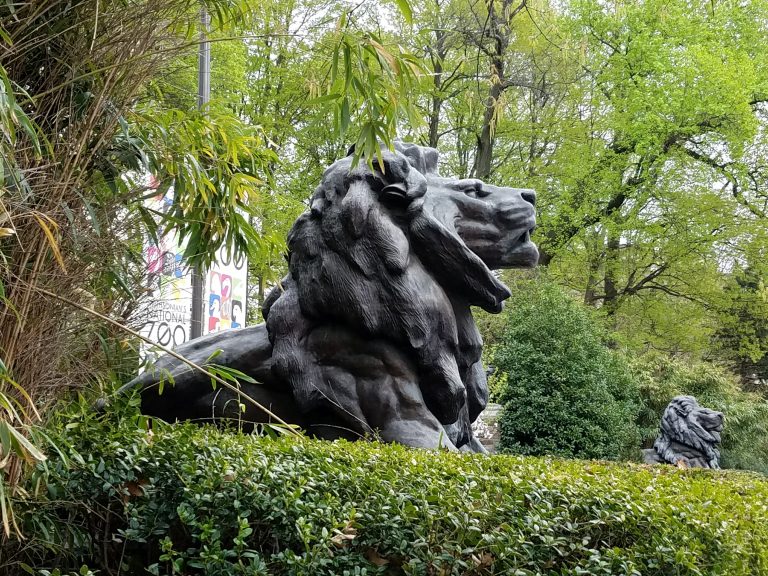
Similar Posts
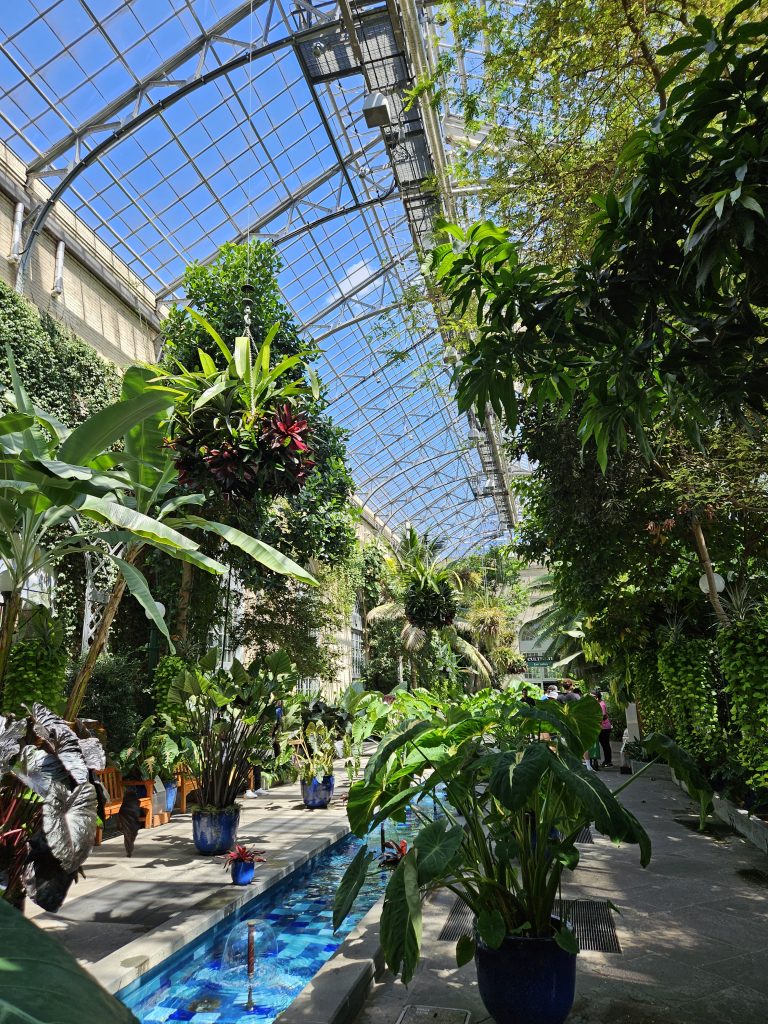
What’s Blooming at the United States Botanic Gardens
No matter what time of year it is, the United States Botanic Gardens is a wonderful place to enjoy greenery and flowering plants. The space includes both outdoor gardens that change with the seasons and an indoor conservatory. The indoor spaces welcome guests year-round but are especially nice on a colder or rainy day. The Botanic Gardens…

WHAT IF? Celebrates the Beauty of Black Culture at 11:Eleven Gallery
WHAT IF? Celebrates the Beauty of Black Culture at 11:Eleven Gallery As we reflect on February and the celebration of Black History Month, it’s easy to focus on the events and contributions that have already been made. But the best part about history is that so many of the best parts have not been created…

Secret Agents for a Day: A Visit to the International Spy Museum
Secret Agents for a Day: A Visit to the International Spy Museum Update: This visit is from 2013 but the Spy Museum has a new home in L’Enfant Plaza near The Wharf. Mission Complete! The International Spy Museum has been on our Washington, DC bucket list for a while now and we are pleased to…

The Swedish Embassy Presents Faraway So Close
The Embassy of Sweden proudly presents Faraway So Close: Swedish Artists Look at the United States. This exhibition includes both photography and video art that show American culture and society through the eyes of prominent Swedish artists. The display will be open to the public through February 19, 2023 at the Swedish Embassy in Georgetown. …

National Gallery of Art – East Building is an Instagramer’s Dream
Our friends from Frederick came to town on a rainy Saturday for a day of touristing. The sky was spitting rain but we didn’t let that stop us from engaging on a self guided monument tour. Our tour led us to the Sculpture Garden where we took in the larger than life outdoor art and enormous fountain….

From Blogging to Bakery: Fetching Goodies Serves Up Gluten-Free and Vegan Treats
Rachel from Fetching Goodies in Alexandria has been blogging about recipes since college. After years of recipe practice and dreaming about opening a bakery, she took the leap to start a home bakery last year. Rachel’s specialty is cookie bars with plenty of gluten-free and vegan options. She’s also added some pie to her menu…
- Skip to primary navigation
- Skip to main content
- Skip to primary sidebar
- Skip to footer
TravelAwaits
Our mission is to serve the 50+ traveler who's ready to cross a few items off their bucket list.
The Smithsonian: 12 Can’t-Miss Sights For History Lovers

travelview / Shutterstock
- Activities and Interests
- Destinations
- History and Culture
- United States
- Washington, D.C.
Washington, D.C., offers so much to see and do that incorporating a visit to the Smithsonian might seem overwhelming. After all, the Smithsonian isn’t a single museum. Rather, it’s a collection of 19 museums, galleries, gardens, and a zoo, making it the world’s largest museum complex.
How do you know which exhibits to focus on when you visit the capital city? If you’re a history lover, you can start with the following iconic exhibits.
Pro Tip: Nicknamed America’s Treasure Chest, the Smithsonian’s collections include more than 156 million artifacts and works of art. However, only a small percentage — about 2 percent — is on display at any given time. So be sure to visit the Smithsonian’s website before you go to ensure that the object you wish to see is on display (or to select an alternative from that era in history).
James Smithson’s Crypt
Smithsonian institution building (the castle).
Begin your adventures at the Smithsonian with a stop at the Smithsonian Institution Building , also known as the Smithsonian Castle. Not only does the red sandstone building house the Smithsonian Visitor Center, but it is also the final resting place of James Smithson. An English chemist and lifelong learner who never married or had children, Smithson left his estate to a nation he never visited to form what would become the Smithsonian Institution.

Sage Scott / EverydayWanderer.com
Treaties Between The United States And American Indian Nations
National museum of the american indian.
For centuries before the first European set foot on North America, nearly 600 distinct Native American tribes called this land home. Over the years, as settlers usurped Native American lands and chipped away at their way of life, more than 370 treaties were ratified between Europeans and Native Americans.
This exhibit at the National Museum of the American Indian features a rotating display of eight treaties. To preserve the fragile documents for future generations, each treaty can only be displayed for about six months before being returned to the archives.
As you visit the museum, be sure to take note of the unique structure. Not only did a team of Native Americans design the five-story museum, but Native Americans also manage its daily operations. From the seasonal Native American-inspired menu in the museum’s cafe to the displays throughout the museum, the experience is quite different from those offered by museums of European and Euro-American culture.
Star-Spangled Banner (Great Garrison Flag)
National museum of american history.
Chances are you’ve heard how the “broad stripes and bright stars” of the American flag raised above Fort McHenry during the War of 1812 inspired Francis Scott Key to pen our national anthem. But have you seen the original? On display at the National Museum of American History, the 15-star banner is missing at least eight feet of fabric due to deterioration and patriotic Americans who snipped pieces as keepsakes.
Declaration Of Sentiments Table
The Declaration of Independence states that each of us possesses the right to life, liberty, and the pursuit of happiness. But the truth is that American women were treated as second-class citizens for many years. Fed up with the inequality, Elizabeth Cady Stanton and Lucretia Mott drafted a declaration of rights specifically for American women in 1848. And the table where the Declaration of Sentiments was signed is on display at the Smithsonian.

Wikimedia Commons ( CC BY-SA 2.0 )
‘Fireside Chat’ Microphone
Before social media, the Internet, and television shaped communication in America, there was radio. And it was through this “new” medium that President Franklin D. Roosevelt addressed the American public as he led the nation through some of its biggest challenges, including the Great Depression and World War II. The 32nd president used the NBC microphone on display at the Smithsonian to broadcast 30 “fireside chats” during his presidency.
Entrenching Tool From World War I
The world’s first truly global conflict, World War I was known for trench warfare . Along the Western Front, young men dug long, narrow trenches between warring Germany and the Allied Powers of France, Belgium, and the Netherlands; there, they’d hunker down for weeks at a time. The entrenching tools used to dig miles of trenches were less than 2 feet long.
Charles Lindbergh’s Spirit Of St. Louis
National air and space museum.
When I think of the history of flight in America, the Wright brothers, Amelia Earhart, and Charles Lindbergh come to mind. In his silver, single-engine plane (named for the folks who financed the custom-built craft), legendary aviator Charles Lindbergh became the first person to fly nonstop from New York to Paris in 1927. Today, the trendsetting aircraft is prominently displayed in the Boeing Milestones of Flight Hall.

Wikimedia Commons ( CC BY-SA 4.0 )
Mobile Quarantine Facility (MQF) From The Apollo 11 Landing
Steven f. udvar-hazy center.
About 40 minutes west of Washington, D.C., near Dulles International Airport, the 760,000-square-foot Steven F. Udvar-Hazy Center contains a variety of additional air-related artifacts beyond those at the National Air and Space Museum. And whether you witnessed the historic moon landing in real time on television or learned about it after the fact, you’ll likely recall the Apollo 11 astronauts peering out of the back of the MQF as they were welcomed home by President Richard Nixon.
Rosa Parks’s Dress
National museum of african american history and culture (nmaahc).
During her commute home in 1955, Rosa Parks was arrested for refusing to give up her bus seat to a white man. At the time of her arrest, the seamstress was stitching a long-sleeved, shawl-collar floral print dress that you can see at the NMAAHC.
Pro Tip: While there is no admission fee to visit any of the Smithsonian museums, galleries, or gardens, timed-entry tickets are currently required to visit the NMAAHC.
Apple Macintosh Personal Computer
Launched via an Orwellian commercial that aired at the Super Bowl XVIII, the Apple Macintosh revolutionized personal computing by being the first home computer with a built-in screen and mouse. The Mac’s graphical user interface (GUI) allowed users to click, drag, and drop instead of typing out commands. Computers have advanced tremendously since the mid 1980s, so don’t miss this first-generation Apple computer when you visit the Smithsonian.

Julia Child’s Kitchen
Whether you remember it from her television show, The French Chef , or from the end of the award-winning movie Julie & Julia , you won’t want to miss Julia Child’s kitchen at the National Museum of American History. Built with higher-than-standard countertops to accommodate the chef’s height, the kitchen was moved from Child’s home in Cambridge, Massachusetts, to the Smithsonian in 2001.
Portraits Of Barack And Michelle Obama
National portrait gallery.
Although an official portrait of each president is hung in the National Portrait Gallery at the end of their term, President Barack Obama made history by being the first black American elected to the highest office. It was also the first time that a black artist was commissioned to paint an official presidential portrait.
While it’s in the 20th-Century Americans exhibit instead of the America’s Presidents gallery , First Lady Michelle Obama’s portrait by Amy Sherald is also a first — the first portrait of a First Lady painted by a black artist.

Tips For A Fantastic Visit To The Smithsonian
- The Smithsonian welcomes nearly 30 million visitors per year , so you’re likely to experience a crowd when you visit. Consider starting your tour on the top floor and working your way down.
- The Smithsonian is an inclusive attraction and provides detailed information about accessibility on its website.
- Whether you visit one exhibit, one museum, or multiple Smithsonian buildings, be prepared to do a lot of walking. In addition to wearing comfortable shoes, take a load off by relaxing in the Hirshhorn Museum’s sculpture garden or by watching a movie at the Air and Space Museum.

Bitten by the travel bug as a preschooler when her family moved abroad for the first time, Sage Scott is addicted to travel. From her nomadic upbringing in a military family to her personal and professional travels as an adult, Sage has visited all 50 states, lived abroad twice, and explored nearly 30 other countries.
Now settled in America’s Heartland, Sage writes with a midlife traveler’s perspective from Kansas City — the Midwestern cowtown affectionately called the Paris of the Plains and the undisputed Barbecue Capital of the World — and is always in search of new experiences whether in her hometown or halfway around the world.
Tips for Visiting the Smithsonians in Washington DC
It’s hard to visit Washington DC without visiting at least one Smithsonian Museum. But what if you want to do them all? Can you do it on a weekend? Or do you need a full week?
There were a few museums that blew me away, while others, I quickly found a few Smithsonians that I probably could have skipped altogether. Here is your guide to the Smithsonians in Washington DC.
A Guide to Visiting the Smithsonians in Washington DC
The Smithsonian Institutions is the world’s largest museum complex, housing over 145 million artifacts and works of art. One of the nation’s most popular attractions, the Smithsonian is a collection of 19 museums, research centers, and galleries, with 24 satellite facilities.
Although many of the museums in D.C. can be visited for free, many require tickets, so be sure to plan ahead of your visit. The largest concentrations of museums in on the Mall in Washington DC.
General Tips
The Smithsonian Institute gives a long list of tips to get you through security faster and have a better experience. I put them to the test and found out that they don’t all pan out. So let’s break them down a bit.
Skip the backpack to get through security quicker
That’s because there are usually a dozen or more people in front of you all with bags. In some cases having the bag may make it easier to go through security, especially if you forget to pull a dime out of your pocket and then set off the alarm. But since they don’t have a line for people without bags, it doesn’t help.
The trick is to have as few pockets as possible and very little inside.
Each museum has different security protocols. Sometimes your bag will go through an x-ray and other times you’ll have someone poke through it… literally.
To ensure things go quick, bring the bare minimum to the museum. Have as few pockets on your bag as possible.
Avoiding the Crowds By Skipping Peak Times
The Smithsonian Institute recommends avoiding visiting on weekends, holidays, during the National Cherry Blossom Holiday Festival and Winter Break. Arriving early on weekends and late on weekdays. For the most part, they are spot on.
During the week, the crowds are manageable. In the morning the museums will be flooded with younger kids and teenagers on field trips. That’s why they recommend going later in the day.
The sweet spot really is from 4-5:30. You can get through the museum in that amount of time, as long as you don’t linger.
If you have to do it on the weekend, get there early. I’m talking about being one of those people lined up waiting for the place to open.
From then, go straight to the top. By the time you get to the bottom, there will be crowds, but at least you’ll have the top floor to yourself.
Pro Tip for Planning Your Visit
Most people are in Washington DC for a set amount of time and can’t always be there just during the sweet spot for low traffic.
That’s why you should prioritize your visit to the Smithsonians based on their traffic levels. This will give you a better idea of how popular they are.
Try and arrange your itinerary around so you are on the most popular museums during the week and you’ll have a better experience overall.
In 2019, here are the most popular Smithsonian Museums: National Museums of Natural History – 4.2 Million National Air and Space Museum – 3.2 Million National Museums of American History – 2.8 Million African American History and Culture – 2 Million American Art Museum – 2 Million National Zoo – 1.8 Million National Portate Gallery – 1.7 Million National Museum of the American Indian – 960 Thousand *Data from the Smithsonian News desk. 2020 data the museum were not opened consistently to gauge traffic levels.
Can I bring a Camera?
The Smithsonian museums love it when you bring your camera. Feel free to share and hashtag your pics. There are a few things that they do not want you to photograph, like the Star-Spangled Banner flag.
It’s too fragile and can’t handle flashes. They don’t want to risk someone having it going off, so no pictures at all. If there is something that you can’t take pictures of, you’ll see plenty of signs and usually staff nearby reminding you that there is no photography.
What about Strollers?
Visiting the Smithsonians with young kids can be challenging. A limited number of strollers are allowed in the building. With the crowds and trying to navigate inside, I recommend leaving them at home if possible.
A few locations, like the Museum of Natural History, rely mainly on stairs, where others use escalators. They all have elevators for those that need them, but who wants to wait for them if you don’t have to.
How Long Do You Need?
Give yourself 1-3 hours per museum depending on your level of interest. It’s possible to see 3-4 in one day. It will be an exhausting day, but feasible.
If it’s 4:30 and you’re trying to decide if you can get into another one, you can. At around 5:15, they’ll start warning you they will be closing before they officially kick everyone out.
Do We Need to Buy Tickets?
The Smithsonians are all free to visit. The Museum of African America History and Culture & the National Zoo in DC requires timed entry ticket.
It’s still free but harder to come to because of its popularity. There are also some same-day online passes and walk-up passes available too.
Visiting the Smithsonians Museums in DC
National air and space museum.
The power of what humans can do is unreal. The museum is filled with lots of fun artifacts, including spaceships, lunar landers, space suits, and original aircraft.
Add ons inside include things like simulators and shows about our galaxy for a fee. But it is still one of my favorite museums to visit.
You don’t need as much time on this one because of the size of the artifacts. A lot of the things were prototypes, as the original lunar modules were left on the moon.
The museum was going through some changes while I was there, getting new displays ready so a portion of the building was blocked off.
My biggest complaint was that some rooms were hot while others had air conditioning. I also found limited places to sit. On a 90 degree day, while you’ve been walking non-stop, it was noticeable.
The National Air and Space Museum is a Must See Museum.

National Museums of Natural History
The National Museums of Natural History was on my list for a long time. Inside it is filled with bones from all different creatures, including Dinasores.
It has precious jewels and gems like the hope diamond and Marie Antoinette’s Diamond Earrings. They had multiple Mummys on display and other random things.
The place was nuts when we visited, making it hard to get up close to anything. Beyond that, it felt like dumping ground where they put things that didn’t have a good category.
I was disappointed the other animals on display were only of their skeletons. I would have liked to see the fur and depiction of what it would have looked like. I also felt that charging $7.50 admission to a butterfly garden was a little steep.
The National Museum of Natural History is one you can skip .
National Museums of American History
The National Museums of American History holds some of America’s most iconic treasures. You’ll find things like Dorthey’s Ruby Red Slippers from the Wizard of Oz and Captain America’s Shield from the Marvel Comic Movies.
Almost every First Lady’s Inaugural Dresses are displayed along with China from the White House Collection. This is something you don’t get to see on the White House Tour .
Not everything has a pop culture reference though. Things like a life jacket from the Titanic are on display. There is a representation from every war.
Memorabilia that is at the Vietnam Memorial is picked up every night and included in the museum’s display. But the most shocking artifact was some steel beam leftover from the World Trade Center.
My personal favorites were getting to see the Star-Spangled Banner. The Flag is 30 x 42 feet. It was made by Mary Pickersgill and inspired our National Anthem.
The flag is hidden behind a glass wall. Because of its condition, they won’t let guests take pictures. My other favorite piece was the microphone that FDR used for his fireside chats.
The National Museum of American History is a Must See Museum.
The National Zoo
The only place to see pandas in the US is the National Zoo. Surprisingly, the Smithsonians also cover living animals and not just artifacts. They just left the San Diego Zoo to return back to China.
I thought it was a good zoo overall, but small. There was a nice mix of different animals, including Lions and Tigers and Bears. Except the Tigers were hiding when we were there.
The panda enclosures were a lot of fun to see. They had multiple enclosures and vantage points at all of them. Getting there at 9am and making them a priority, allowed us to see them when they were most active and eating.
A few criticisms of the place. 95% of the zoo was all outdoors on a hill. You start at the top and work your way back up. There were brief sections indoors for the animals.
Some buildings like the Amazon didn’t open until 10 am. If you are using Uber to get there, make sure to select the front entrance.
The GPS coordinates the app took our driver was to a back entrance. Thankfully our driver re-routed us to the front making it easier to get picked up.
Visit the National Zoo if you have time or pandas are on your list.
National Museum of the American Indian
One of the newest museums to hit the scene is the National Museum of the American Indian. American Indian includes everything in North and South America, which threw me off a little.
They had artifacts from lots of different tribes all ranging in different climates. It was interesting to see their way of life.
There was also a section completely relating to their influence on America and how they shaped the cultures. Peace Pipes, Treaties, and other things are on display. They also delved into how they shaped pop culture with Sitting Bull, comics, magazine depictions, and Indian Motorcycles.
This was the best of all the Museums for me and the least crowded. Everything was on the top two floors of the building. They also had great air-conditioning.
The National Museum of the American Indian is a must see for all Americans.
Other Things to Note
Things to note about the Smithsonians is that they have so many different artifacts hiding away. They do a great job of mixing in the artifacts with informational displays. But the balance is skewed towards informational displays. I would have liked to see more stuff.
Especially knowing how much they have. The Dorthy’s Ruby Red Slippers, for example, have a wing of the museum all to themselves. On busy days, they may need that much space.
But I would love to have seen more collectibles in the room. I also noticed on a lot of signs they were reproductions or models of the originals. When I go to a museum, I want to see the real thing.
I also didn’t get a chance to visit the African American History and Culture Museum. It is in high demand and not something we planned for initially on our visit.
There are a few other Museums including 9 different art galleries and the Postal Museum that we didn’t have time for either. I prioritized seeing the Van Goghs that are housed at the National Gallery of Art. If I have time, I would love to have done them all.
The last time I was in Washington DC visiting the Smithsonians was over 10 years ago. Walking into the Smithsonian it was completely different.
They are constantly working on remodeling, fixing, and changing out the exhibits. It’s a great feature that keeps people coming back. It also means that you may find yourself blocked off from portions of the museum like we were for the Air and Space Museum.
Use Public Transportation to Get there
The majority of the Smithsonian’s are all right next to each other or withing a few buildings of each other on Mall. If you need to get around, I recommend borrowing a Bike in DC . They will help you get clear across the mall, or to the offsite museums.
We used the Bikes for the our DIY Monuments tour and it was amazing !
Are Visiting the Smithsonians Worth It?
Yes! Yes! and Yes! I may be a little critical of visiting the Smithsonians but that’s only because most people have limited time while they are in DC. I know their potential and some live up the hype.
I think they do a great job of displaying our history. It’s hard not to leave without finding something completely new and exciting.
Pin it for later
Minnesota native and Midwest travel expert Jennifer provides insider tips and budget-friendly trip ideas for families looking to explore the Land of 10,000 Lakes. Through her travel blog DayTripper28, she draws on first-hand experience to recommend the best hidden gems, outdoor adventures, road trips, and weekend getaways around Minnesota and the Midwest. With her passion for uncovering local flavors and culture along the backroads, Jennifer shares affordable itineraries for creating memorable experiences across the region.
Similar Posts
Where is the best shakopee brunch o’brien’s public house.
Irish Pubs in the Twin Cities can be found everywhere. Irish blood runs deep in this part of the…
White House Tours 2024: All the Details You Need Before Going
The most coveted tour in Washington DC is always the White House. It has been the home to 44…
Navigating the MPLS Skyways Like a Local
The best-kept secret in Minneapolis is the Skyways. They aren’t exactly a secret. They’ve been around forever and have…
Visiting the USS Midway: Tips for your Trip
On April 29th, 1975 the North Vietnamese launched their final offensive against the South Vietnamese. The United States and…
21 Best Hikes Near Minneapolis and St Paul 2024
Current Problem- there are so many hikes I want to do and not enough weekends in the year to…
The Duluth Depot | One Epic Museum
Have you ever dreamed of being a train conductor? Well on our latest trip we got to be more…

Sign Up Today
Start your 14 day free trial today

The History Hit Miscellany of Facts, Figures and Fascinating Finds
- United States
The Smithsonian Institution

17 Jul 2023
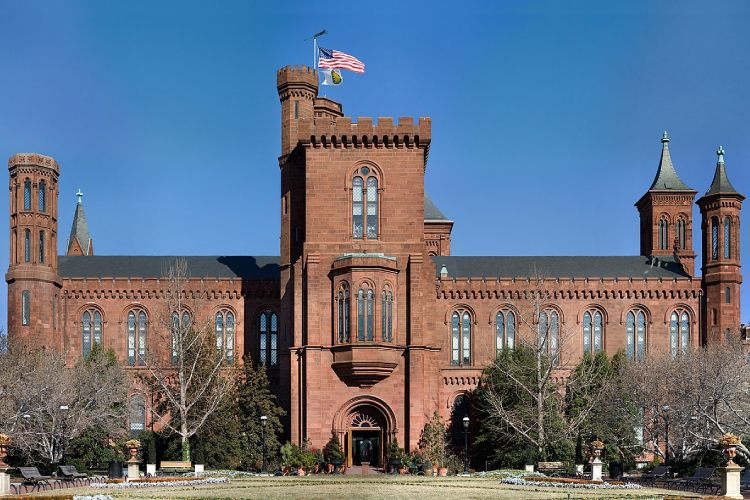
About The Smithsonian Institution
Collectively called the Smithsonian Institution, this renowned museum and research complex (the world’s largest) consists of 17 museums and galleries in Washington D.C. including America’s National Zoo. Its aim is to preserve heritage, discover new knowledge, and share their resources with the world.
History of The Smithsonian Institution
The Institution was founded in 1846 through a financial bequest by British Scientist James Smithson (1765–1829), the illegitimate son of a Duke. In his will, he left his considerable fortune to a nephew stipulating that, if his nephew died without heirs, the money go “to the United States of America, to found at Washington, under the name of the Smithsonian Institution, an establishment for the increase and diffusion of knowledge.”
After his nephew died, the museum complex was born. It is unclear why Smithson left such a large bequest to a place he’d never been, but his gift, The Smithsonian Institution, was officially created by an act of Congress in 1846.
Its first building was the Smithsonian Castle, a distinctive red Maryland sandstone structure completed in 1855. This towered, neo-Gothic structure designed by James Renwick, initially held the entire institution which consisted of a gallery, a natural history collection, a laboratory and the first secretary of the organisation’s apartment.
Although initially focused on scientific research, the prestigious Smithsonian expanded to encompass a vast range of disciplines, including history, art, anthropology, and more.
The Smithsonian Institution today
It can be hard to know where to head first, but a good place to start is the Smithsonian Institution Building, known as “The Castle” due to the building’s appearance – a replica of a 12th-century Norman castle. This visitor’s centre has interactive 3-D maps pinpointing and detailing the 17 DC-area Smithsonian Institution properties, and contains the America’s Treasure Chest exhibit, giving visitors a glimpse of just some of the types of artefacts displayed in all the Smithsonian museums.
It also houses the exhibit A Castle of Curiosities, which delves into the history of the castle and Smithson’s life. The final resting place of the Smithsonian’s founder, James Smithson, is also located at the Castle’s north entrance.
The Smithsonian collections contain over 155 million objects, works of art and specimens – from the origins of man at The Natural History Museum which includes objects such as the famed Hope Diamond, to the history of flight and the future of space travel at the Air and Space Museum where you can even see the Wright brothers’ 1903 Flyer. W hich museums you visit clearly depends on your interests. Highlights include the American History Museum, America’s 163-acre National Zoo (which features 300 species and serves as a global research and conservation facility), the Smithsonian American Art Museum, America’s National Portrait Gallery, and the American Indian Museum. The newest addition to the Institution’s collection is the National Museum of African American History and Culture.
Admission to all Smithsonian museums is free, though you would obviously need multiple visits to pack them all in.
Getting to The Smithsonian Institution
Many of the museums are located on the National Mall and are easily accessible by Metro, including the visitor centre which has its own Metro stop on the Orange and Blue lines. Other Smithsonian museums are scattered throughout Washington D.C., such as the National Zoo in Woodley Park and the Postal Museum near Union Station (as well as one in Virginia).
Featured In
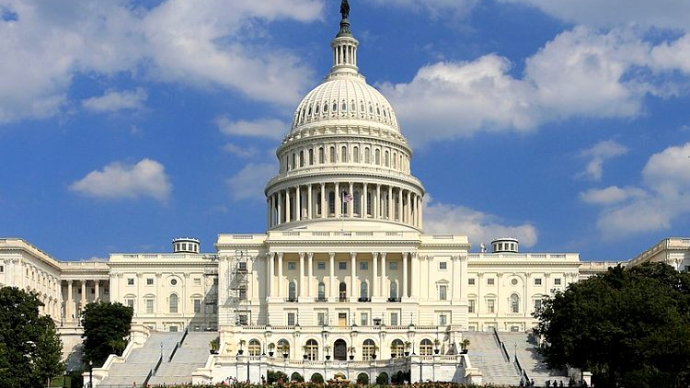
Historic sites in Washington D.C.
A guide to 10 of the very best historic sites in America's capital city, including The Capitol, Lincoln Memorial and The White House.

Related Articles
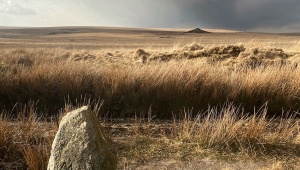
6+6+6 Haunting Photos of Dartmoor
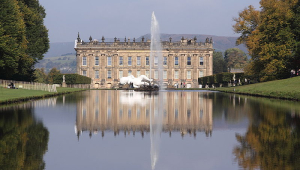
6 of Britain’s Most Beautiful Baroque Buildings
Watch and listen.

HMS Terror and Erebus: With Sir Michael Palin

River Journeys with Conrad Humphreys
You may also like.
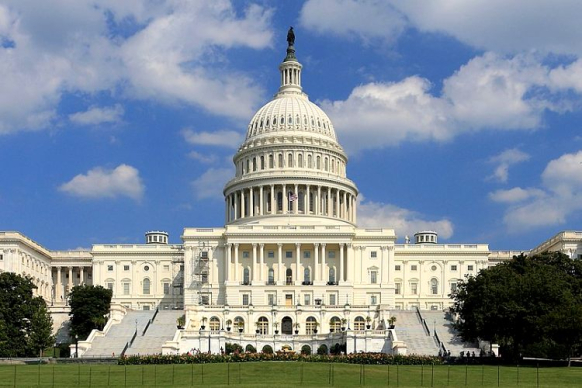
10 of the Best Historic Sites in Washington D.C.
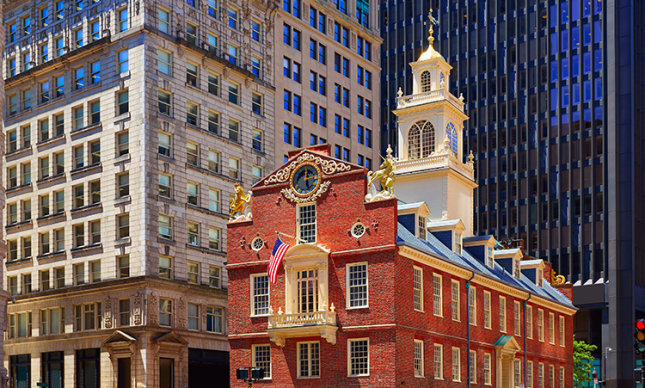
10 of the Best Historic Sites in Boston
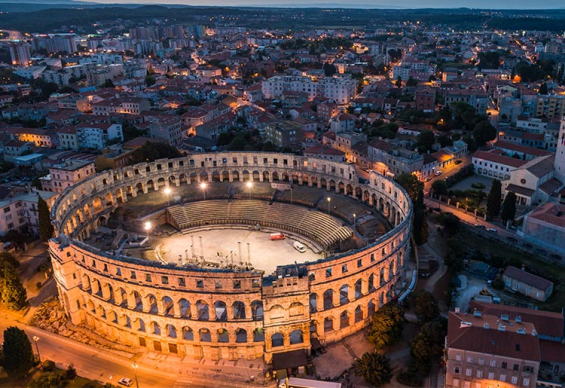
10 Historic Sites You Should Not Miss in 2023
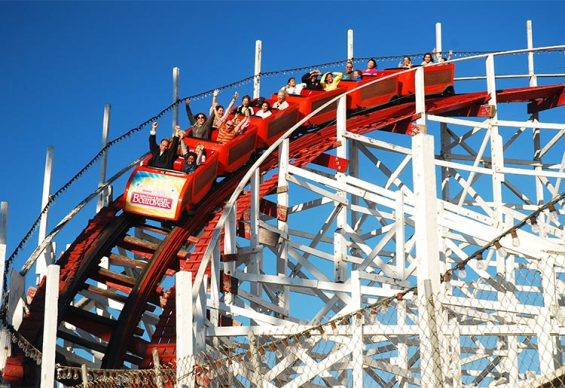
The 6 Oldest Rollercoasters in the USA

The World’s 10 Best Dinosaur Museums
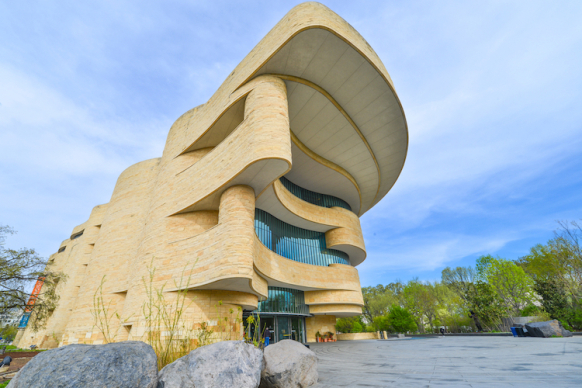
10 Native American History Museums in the USA
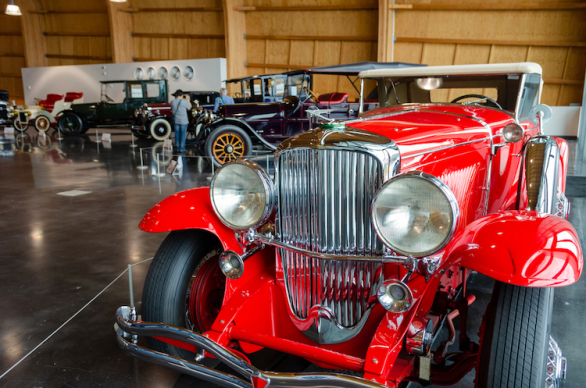
Unmissable Car Museums to Visit in the USA
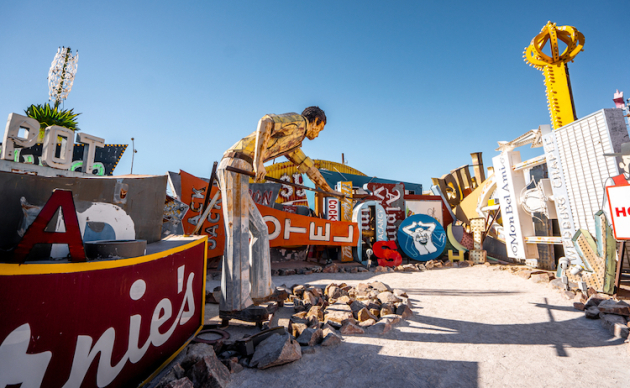
Weird and Wonderful Museums to Visit in the United States
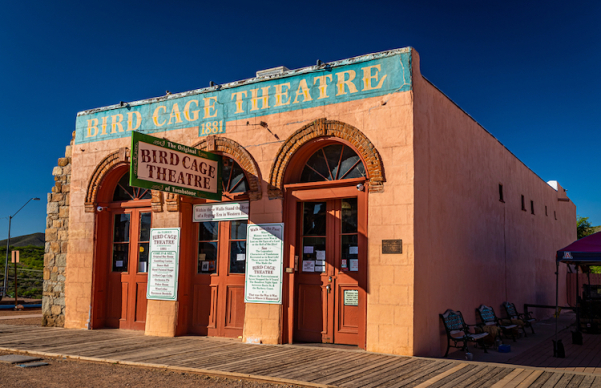
Unmissable Wild West Experiences in the USA
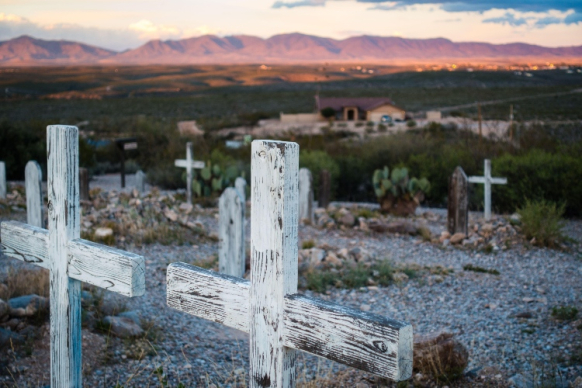
Six Feet Under: Gunslinger Graves of the Wild West
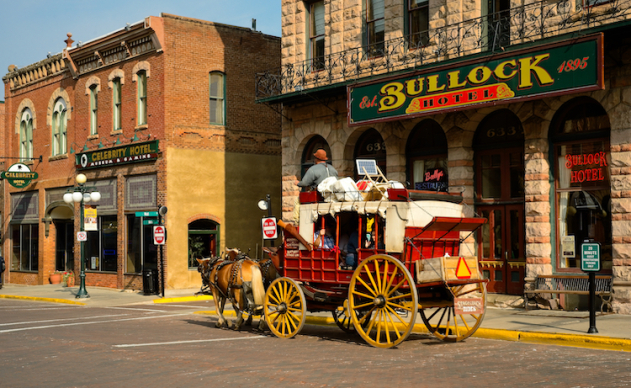
The Top Wild West Towns You Can Visit Today
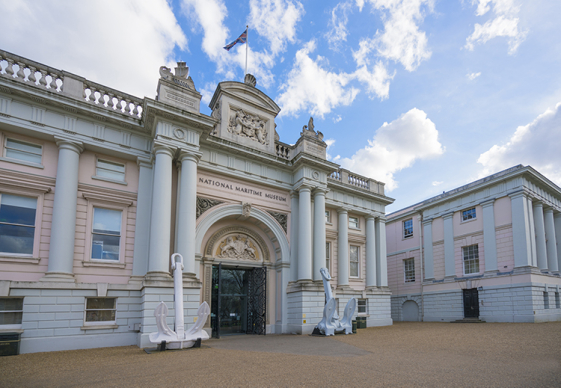
Important Maritime Museums to Visit Around the World
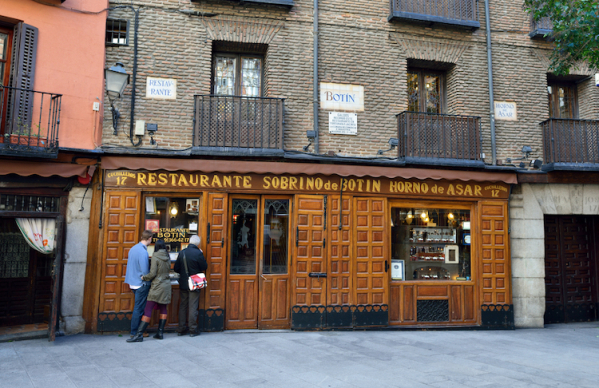
8 of the World’s Oldest Restaurants
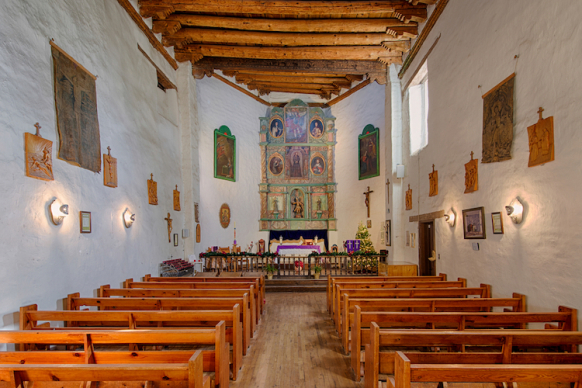
10 of the Oldest Churches in the World

Love to read? Prefer the movie or TV series? Either way, see how your next binge can make a difference.
Smithsonian Museum Guide: Museums and Galleries on the National Mall
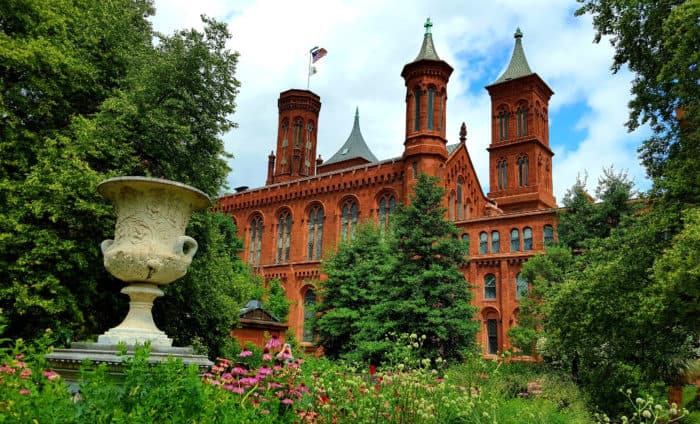
In this Article
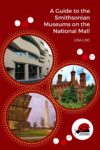
For more than 150 years, the Smithsonian Institution’s collection of world-class museums has attracted millions of visitors from around the world. Here is a complete guide to the Smithsonian museums, galleries, and gardens on the National Mall in Washington, DC.
I always chuckle when folks describe their ideal itinerary for a trip to Washington, DC and say that they want to spend a day visiting the Smithsonian museum. Little do they realize that the Smithsonian Institution is just that, an institution! And it’s way more than a single, world-renowned museum. It’s a collection of museums, galleries, and even a zoo! So how do you start to break down what you want to see at the Smithsonian museums, galleries, or National Zoo when you visit Washington, DC? Fear not! This complete guide to visiting the Smithsonian will help!
Sage Advice: These are the best places to stay in Washington DC based on your travel itinerary .
Museum exhibit designers classify visitors into three types: streakers, strollers, and studiers .
- Streakers are typically at a museum because someone else in their party wants to be. Not them. They may glance at a few pieces, but their hearts are generally not into the experience.
- A stroller is someone with a moderate interest in the topic, region, or other aspects of the exhibit. They are the museum equivalent of someone who picks up a magazine and casually flips through the pages looking at the photos, reading the captions, and skimming the articles until they stop and read a piece fully.
- And a studier will carefully absorb every detail of an exhibit, from reading every word on the signage to carefully examining each piece on display.
Even if you are a streaker, I think you’d be hard-pressed to walk every inch of the National Mall museums in a single day. As a stroller myself, I think you can successfully tackle two Smithsonian museums a day and feel like you did it justice. But if you’re a studier, you’ll likely want one full day per museum.
Sage Advice: Funded by a private trust fund and American taxpayers, there is no admission fee to experience any of the Smithsonian museums, galleries, or the National Zoo. But some museums may only be accessible with a little advanced planning and a timed-entry ticket. For the smoothest experience, check each individual museum website before you visit.

Have You Visited the Smithsonian?
Share your favorite photo with me by tagging @sagescott.kc on Instagram and using the hashtag #everydaywanderer
To help offset the costs of running EverydayWanderer.com, you’ll find affiliate links lightly sprinkled throughout the site. If you choose to make a purchase via one of these links , there’s no additional cost to you, but I’ll earn a teeny tiny commission. You can read all of the legal blah blah blah (as my little niece says) on the full disclosure page .
About this Guide to the Smithsonian
This guide to the Smithsonian starts with the Smithsonian Visitor Center and then loosely follows a counter-clockwise fashion around the National Mall. Simply walking from the Smithsonian Castle to the other nine museums listed in this guide is a 2.4-mile undertaking. Add in the distance you’ll walk exploring each museum, and that distance quickly grows longer.
Sage Advice: Explore Washington DC beyond the National Mall museums with this interactive scavenger hunt of DC .
Map of the National Mall Museums
How to Use This Map
- Zoom in or out using the + and – keys in the bottom right corner.
- Click the “More options” text link in the upper left corner to open this embedded map in a new browser window and take advantage of more options including the ability to send these directions to your phone.
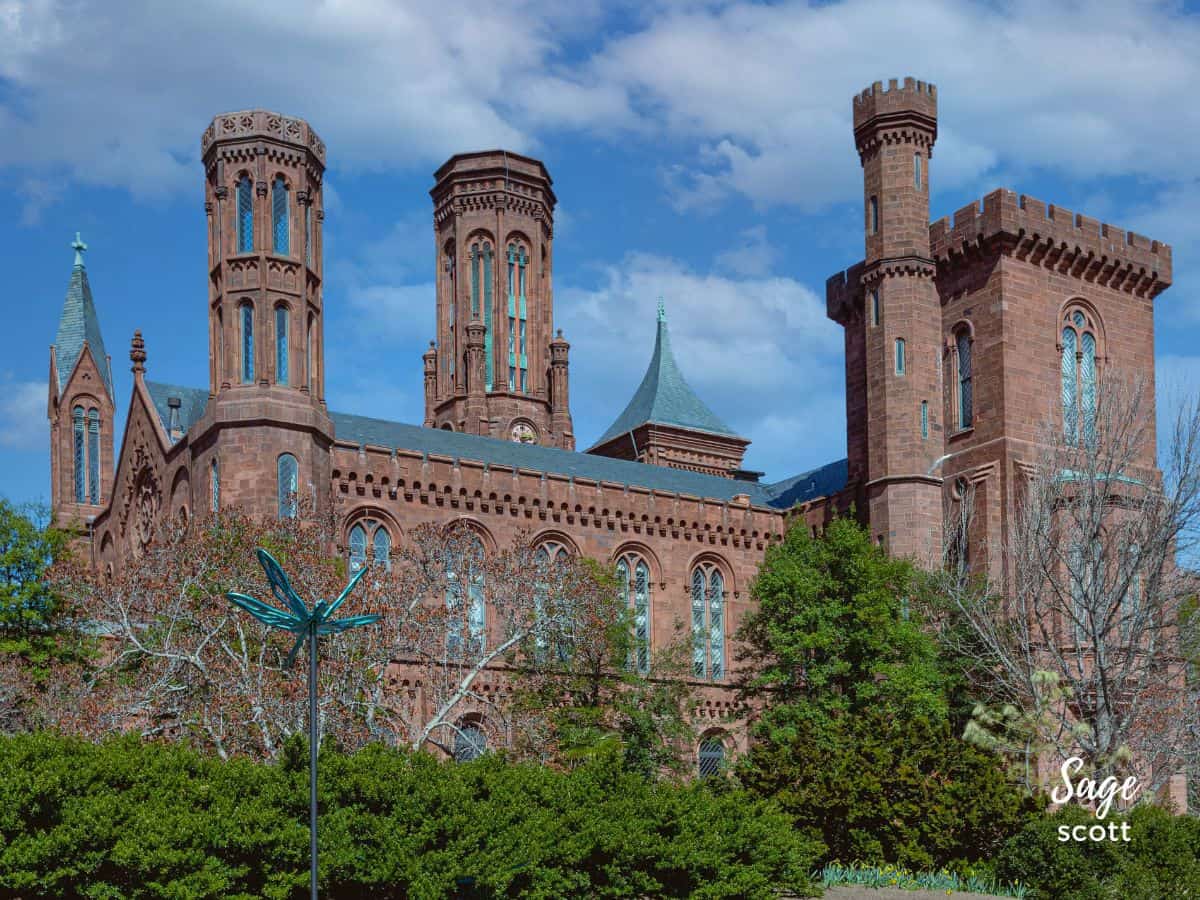
The Smithsonian Institution Building (AKA The Castle)
1000 Jefferson Dr. SW Hours of Operation: 8:30 am to 5:30 pm daily (except December 25)
Kicking off this complete guide to the Smithsonian museums on the National Mall is the Smithsonian Visitors Center. Designed by architect James Renwick, Jr., the Smithsonian Institution red sandstone building looks like a 12th-century castle in Normandy, France. Thus, its nickname, the Castle.
The Castle is the perfect place to begin your Smithsonian Institution experience because a crypt just outside the north entrance to the Castle contains the tomb of James Smithson. And if it weren’t for James Smithson, there probably wouldn’t be a Smithsonian Institution.
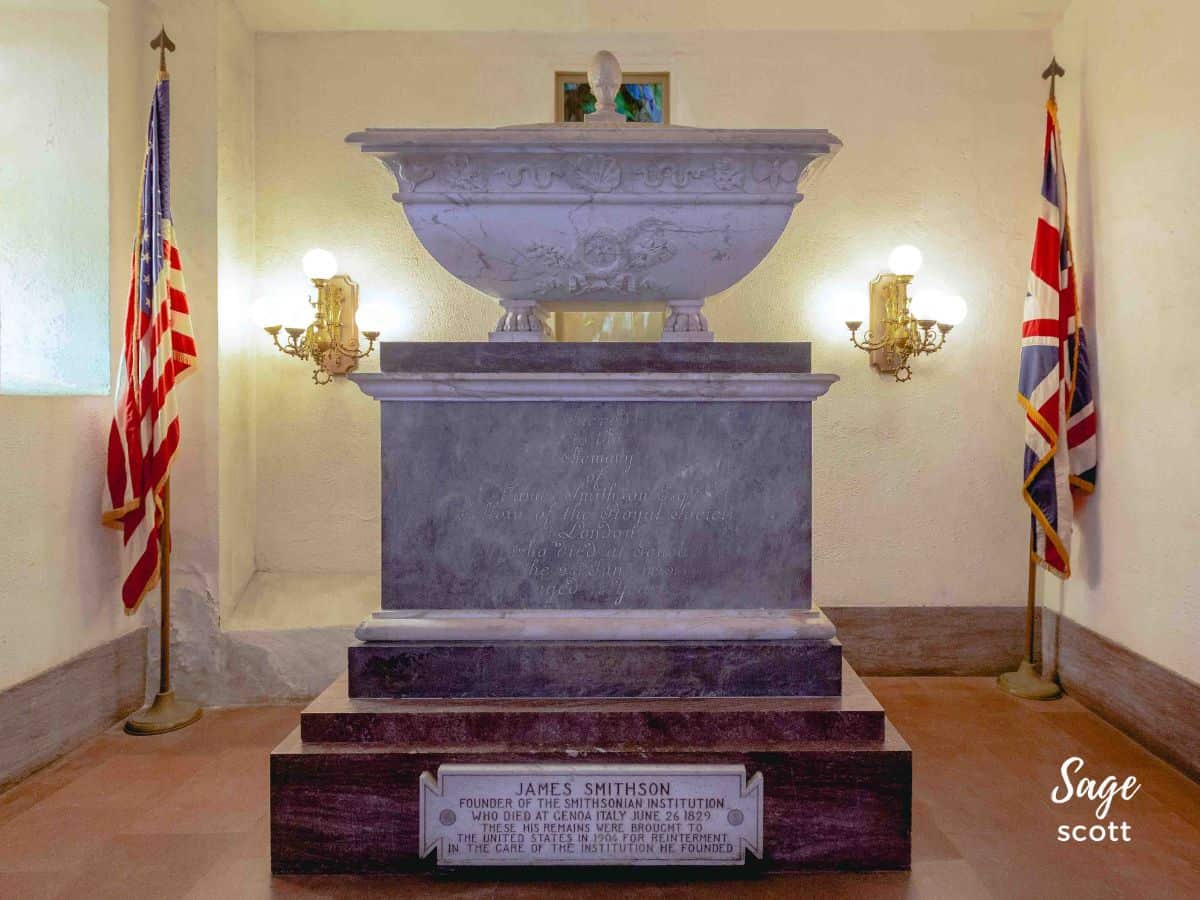
Born out of wedlock in Paris and raised in England, James Smithson was an 18th-century English chemist and mineralogist. Smithson never married nor had children, so his entire estate was left to his nephew. However, if Smithson’s nephew were to die without heirs (which is exactly what happened when he perished in 1835), then Smithson’s worldly possessions were to be used to “found in Washington, under the name of the Smithsonian Institution, an establishment for the increase and diffusion of knowledge among men.”
Fun Fact: Although James Smithson stipulated that the Smithsonian Institution be founded in Washington, DC, the scientist had never actually visited the United States. How lucky for us!
In addition to paying homage to James Smithson, use your time at the Smithsonian Castle to get an overview of the collections at each of the Smithsonian museums and chat with in-house experts to fine tune your Smithsonian experience.
Related Article: Helpful Tips for Visiting the Smithsonian Museums
Freer gallery of art and the arthur m. sackler gallery (aka the national museum of asian art).
1050 Independence Ave, SW Hours of Operation: 10:00 am to 5:30 pm daily (except December 25)
Heading southwest from the Smithsonian Castle, this guide to the Smithsonian takes you to the Freer and Sackler Galleries of Art. Together, they form the Smithsonian’s National Museum of Asian Art. Thanks to the generous donation of Charles Lang Freer’s collection of Asian and American art, the Freer Gallery was the first art museum in the Smithsonian Institution when it opened to the public in 1923.
If you plan to visit the National Museum of Art’s Freer Gallery or Sackler Gallery, don’t miss the recently restored Peacock Room. Originally a dining room in an English mansion in London, the Peacock Room is now a work of art in Washington, DC. Blending rich blue, green, and gold tones with ceramics from Syria, Iran, Japan, China, and Korea, the Peacock Room continues to prove Freer’s belief that “all works of art go together, whatever their period.”
As additional time and interest permits, explore other collections of American, Egyptian, Islamic, Chinese, Himalayan, Japanese, Korean, Near Eastern, and Southeastern Asian Art at the National Museum of Asian Art.
Enid A. Haupt Garden
950 Independence Ave., SW Hours of Operation: 7:00 am to 7:00 pm daily (except December 25)
As you travel between the Sackler Gallery and the Smithsonian National Museum of African Art, don’t miss the opportunity to stroll through the four-acre Victorian garden. The garden’s namesake, Enid A. Haupt, provided the $3 million endowment to construct and maintain the garden.
Fun Fact: The Haupt family built its wealth in publishing and included TV Guide and Seventeen in their list of publications.
The Haupt Garden is actually three separate gardens, all located on the rooftops of Smithsonian museums:
- The Parterre. Organized around a parterre , a series of symmetrical flower beds and walking paths, the Parterre reminds me of the gardens surrounding most castles in France.
- Moongate Garden. Inspired by the gardens and architecture of the Temple of Heaven in Beijing, China, the Moongate Garden is a peaceful, Zen-like experience.
- Fountain Garden. And returning to Europe, the Fountain Garden is designed to look like the Court of the Lions at Alhambra, a 13th-century palace in Granada, Spain.
Enjoying This Article?
Sign up for the newsletter!
Thank You for Subscribing!
Museum of African Art
950 Independence Ave., SW H ours of Operation: 10:00 am to 5:30 pm daily (except December 25)
Started as a privately funded collection in 1964, once it was transferred to the Smithsonian Institution in 1979, the Museum of African Art contained roughly 8,000 sculptures, costumes, books, maps, photographs, and other objects.
Fun Fact: Between the African Art Museum and the Hirshhorn Museum is the second oldest building in the Smithsonian Institution. Although the Arts and Industries Building doesn’t currently house any Smithsonian exhibits, it was designated a National Historic Landmark in 1971 and was the site of an inaugural ball for President James A. Garfield, POTUS #20.
Hirshhorn Museum and Sculpture Garden
Independence Ave and 7th St. Hours of Operation: M useum – Open daily from 10:00 am to 5:30 pm (except December 25). Plaza – Open daily from 7:30 am to 5:30 pm (except December 25). Sculpture Garden – Open daily from 7:30 am to dusk (except December 25)
Sage Advice: The Hirshhorn Museum offers free, 45-minute tours daily at 12:30 and 3:30.
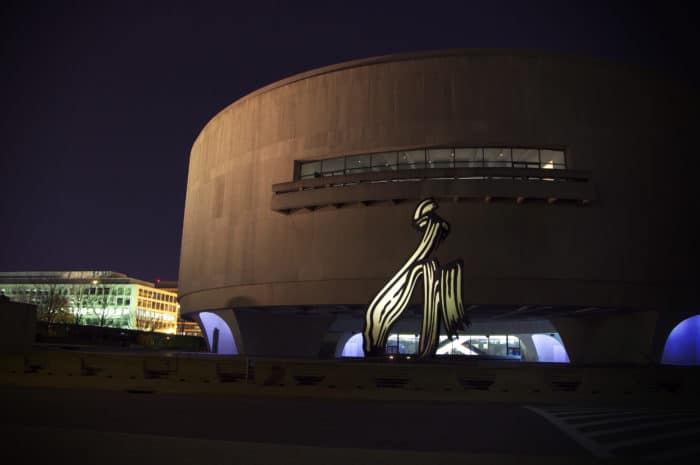
The large, circular building that looks like a car air filter on legs is the Hirshhorn Museum. It sits almost equally between the Washington Monument on the west side of the National Mall and the US Capitol Building on the right and includes a sunken sculpture garden. It is named after Joseph H. Hirshhorn who achieved success by investing in uranium-mining businesses. When he sold his interests in 1955, he earned more than $50 million. With this money, Hirshhorn expanded an already impressive collection of classic French Impressionists to include many other works of art.
Fun Fact: Although most of the funding for the museum that bears his name was via federal funds, Hirshhorn ultimately contributed $1 million toward the building’s construction.
With its large collection of 12,000 works of modern and contemporary art in the forms of paintings, photographs, and sculptures, the Hirshhorn is a great art museum for kids. (Or adults who are less inclined to visit an art museum.)
Related Article: 5 Tips to Help Kids of All Ages Appreciate Art Museums
After you’ve explored the outside of the Hirshhorn Museum, don’t overlook the sculpture garden. Sunk below street level (thanks to those “legs” that hold up the building), the circular inner core of the car air filter-shaped building holds an acre of sculptures in a manicured courtyard with a fountain. Don’t miss Rodin’s The Burghers of Calais or Yoko Ono’s (yes, THAT Yoko Ono) Wish Tree for Washington, DC .
National Air and Space Museum
600 Independence Ave. SW Hours of Operation: 10:00 am to 5:30 pm daily (except December 25)
Sage Advice: The National Air and Space Museum offers free, 90-minute tours daily at 10:30 am and 1:00 pm.
Kicking off the second half of this guide to the Smithsonian National Mall museums is the National Air and Space Museum . With more than 20 galleries in a 161,000 square foot museum, the National Air and Space Museum is the largest in the Smithsonian Institution’s portfolio. And with more than eight million visitors annually, the National Air and Space Museum is not only the most popular of the Smithsonian museums, it’s actually the most visited museum in the entire United States! Its collection of aircraft, artwork, instruments, uniforms and more is fully dedicated to the history of flight and exploring beyond planet Earth.
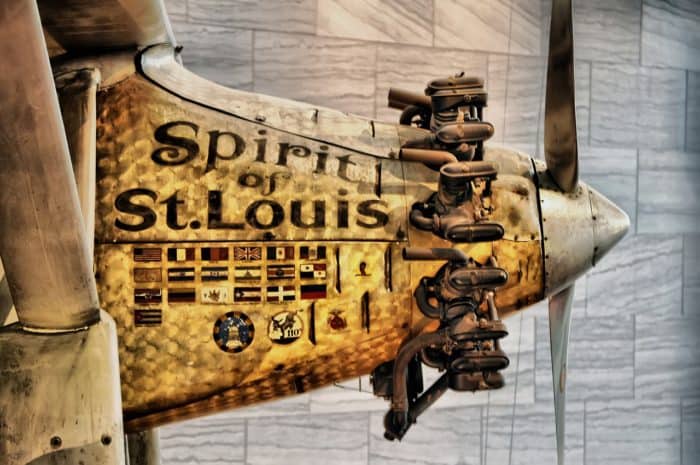
Visit the National Air and Space Museum to see historic objects like:
- America’s first airplane. See the 1903 Wright Flyer flown by Orville and Wilbur Wright in Kitty Hawk, North Carolina back in 1903.
- The Spirit of St. Louis. After successfully crossing the Atlantic Ocean between New York and Paris in 1927, pilot Charles Lindbergh flew his craft from St. Louis to Washington, DC the following spring and presented it to the Smithsonian Institution.
- Apollo 11 command module. This is the trapezoid-shaped unit that the three Apollo 11 astronauts used to return to space after walking on the Earth’s moon .
- Astronaut food. Far from a five-star meal, the Apollo 11 astronauts enjoyed silver packets of dehydrated food.
Sage Advice: Away from the National Mall, the Air and Space Museum at the Udvar-Hazy Center near Dulles Airport in Chantilly, Virginia, houses even more amazing sights. See more about it below.
When you visit, don’t overlook other experiences like:
- Watching a movie in the IMAX theater or attending a show in the planetarium
- Seeing a demonstration or attending a storytime
- Experiencing the thrill of flight in a virtual reality simulator
National Museum of the American Indian
4th St SW & Independence Ave. Hours of Operation: 10:00 am to 5:30 pm daily (except December 25)
This guide to the Smithsonian now brings you to the southeastern most Smithsonian museum on the National Mall. As you approach the National Museum of the American Indian, you’ll immediately note that the building is quite unique from the others in the Smithsonian Institution.
With a team of Native Americans leading its design, the five-story, curved building looks like natural rock shaped by the elements of wind and water over thousands of years. Every aspect of the museum is intended to reinforce the oneness that the indigenous people have with the planet. Donna E. House, the Navajo and Oneida botanist who supervised the museum’s landscaping explained the approach by saying, “We are the trees, we are the rocks, we are the water. And that had to be part of the museum.”
Sage Advice: If you’re in New York, you can visit a second National Museum of the American Indian. Housed in the Alexander Hamilton US Custom House at One Bowling Green.
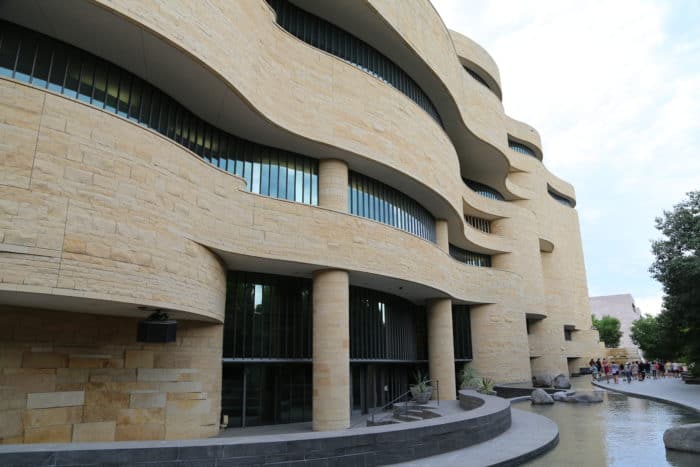
A collection of more than 800,000 objects and 125,000 photographs is on display at the National Museum of the American Indian. It represents the history and culture of a wide range of indigenous people from both North and South America. The galleries are organized into areas dedicated to people from the Amazon, Andes, Arctic and Subarctic, California, Mesoamerican and Caribbean, Northwestern Coast, Patagonia, Plains and Plateau, and Woodlands regions.
Native Americans also manage the daily operations of the museum, and they work hard to ensure that visitors will experience something quite different from museums of European and Euro-American culture when they visit. One example of this is the Mitsitam Native Foods Cafe inside the National Museum of the American Indian. Offering a seasonal, Native American-inspired menu, the museum cafeteria is divided into regions like the Northern Woodlands and Great Plains. Visitors can enjoy wild salmon, bison, Indian fry bread tacos, prickly pear mole, and other unique choices.
Fun Fact: More than 20,000 native Americans, from the 48 contiguous states, Alaska, and Hawaii attended the museum’s inauguration in September 2004. It was the largest gathering of indigenous people in Washington, DC to date.
Sage Advice: While not part of the Smithsonian Institution, don’t overlook the National Gallery of Art which includes the East Building, the West Building, and a sculpture garden.
National Museum of Natural History
10th St. & Constitution Ave. Hours of Operation: 10:00 am to 5:30 pm daily (except December 25)
The National Museum of Natural History is the second-most popular museum in the Smithsonian Institution after the National Air and Space Museum. It houses more than 126 million specimens of animals, plants, minerals, rocks, and other objects.
View this post on Instagram Long line to get into the Natural History Museum, but it will be worth it! A post shared by TJ and Trey (@t.n.t.adventure) on May 27, 2018 at 11:50am PDT
When you visit the National Museum of Natural History , you won’t want to miss the following:
- Dinosaurs. From the tyrannosaurus rex skull on the first floor to scientists at work in the FossiLab on the second floor, the National Museum of Natural History will satisfy any budding paleontologist in your travel group.
- Hall of Human Origins. One of the museum’s newer collections, the Hall of Human Origins, opened in 2010 on its 100th anniversary. With a focus on human evolution, this gallery explores the Earth’s earliest humans through the impact today’s people are having on the planet.
- Hall of Mammals. Organized by continent, from the savannas of Africa to the ice shelves of the Arctic, the National Museum of Natural History’s Hall of Mammals has more than 250 preserved specimens.
- National Gem and Mineral Collection. With the Hope Diamond, a 45-karat blue diamond, and more than 15,000 other gems, 350,000 minerals, and 35,000 meteorites, the museum’s collection is one of the largest in the world.
Wrap up your visit to the Museum of Natural History with a stroll through the Butterfly Pavilion. A timed-entry ticket is required for this live butterfly experience, and admission is approximately $7 per person with discounts offered to children and seniors.
Sage Advice: The Butterfly Pavilion is free on Tuesdays, but a timed entry ticket is still required. So plan ahead!
National Museum of American History
- Star-Spangled Banner. On the second floor, you can see the original flag flown at Fort McHenry during the War of 1812. As you might recall from elementary school history, these stars and stripes inspired Francis Scott Key to pen the song that would become our national anthem.
- First Lady Fashion. From bustles to beaded bodices, sewn from silks and satins, experience 200 years of fashion trends in this gallery featuring the ball gowns worn by America’s First Ladies.
- Bon Appétit! Explore the kitchen of Julia Child, the California-born chef who brought French cuisine to the American public.
National Museum of African American History and Culture (NMAAHC)
1400 Constitution Ave, NW Hours of Operation: 10:00 am to 5:30 pm daily (except December 25)
Wrapping up this guide to the Smithsonian museums on the National Mall is the National Museum of African American History and Culture, also known as the NMAAHC. After nearly 100 years in the making, the NMAAHC opened its doors on September 24, 2016. It remains the only national museum dedicated to the history and culture of African Americans. Over 85,000 square feet and five floors, the museum covers important historical topics like slavery, segregation, and civil rights as well as cultural topics like the arts, community, and religion.
View this post on Instagram One Shot Wanders - The relatively new Smithsonian Museum of African American History and Culture is wonderful on the inside and the outside. #carolinegilmore #oneshotwanders #washingtondc A post shared by Caroline Gilmore (@carolinegilmore_1) on May 27, 2018 at 12:07pm PDT
On the National Mall where each Smithsonian Museum’s architectural design appears to be as intentional as the collections inside it, the NMAAHC is no different. I found myself mesmerized by the three tiers of detailed, metal lattice inspired by the iron grilles found in the African American communities in Charleston, South Carolina and New Orleans, Louisiana.
Consistent with all of the other Smithsonian Museums, there is no admission fee. But the free, timed-entry passes are one of the hottest tickets in Washington, DC. The best way to visit the NMAAHC is to plan ahead and score Advance Online tickets, but there are a few other options you can try .
View this post on Instagram Fifty years ago today, Dr. Martin Luther King Jr. was assassinated in Memphis, Tennessee. King had been working to organize the Poor People’s Campaign, a movement to confront poverty as a human rights issue, and had given a speech the day before when he said, "I've been to the mountaintop [and] I've seen the promised land"—words and deeds that left a lasting legacy. Four days later, Coretta Scott King led a massive, peaceful march in Memphis that honored her husband’s memory by supporting the striking sanitation workers whose cause had drawn King to the city. In this @nmaahc photo, participants carry signs that demand "HONOR KING: END RACISM" and "UNION JUSTICE NOW!" A post shared by Smithsonian (@smithsonian) on Apr 4, 2018 at 1:00pm PDT
If you are lucky enough to land a ticket to the NMAAHC when you visit Washington, DC, you won’t want to miss:
- Rare Photo of Harriet Tubman. Escaped slave turned conductor of the Underground Railroad , Tubman’s contributions to history are significant.
- Louis Armstrong’s Trumpet. With a career that spanned five decades, Louis Armstrong was one of the most influential jazz musicians of the 20th century. See one of his brass trumpets on display at NMAAHC, and when you visit, look for his name engraved in script along the leadpipe.
- Signs of Segregation. From a “colored” drinking fountain to a bus sign from Nashville, Tennessee, signs of segregation that still divided the nation long after the Civil War are on display. Visitors can also see the dress Rosa Parks was sewing the day she refused to give up her bus seat to a white man in Montgomery, Alabama.
- The Champ. See the boxing gloves and headgear worn by one of the world’s most accomplished boxers, Muhammad Ali.
Related Article: Must-See Destinations to Learn About Black History
Sage Advice: While it’s also not part of the Smithsonian Institution, the United States Holocaust Memorial Museum located directly across the National Mall from the National Museum of African History and Culture does an outstanding job of presenting this dark period in world history. If you plan to visit this museum, it’s worth it to pay a $1 per ticket convenience fee to guarantee your timed-entry ticket to the permanent collection.
Frequently Asked Questions About the National Mall Museums
How many smithsonian museums are there.
There are 13 Smithsonian museums, galleries, and gardens located on the National Mall in Washington, DC. There are additional museums outside the National Mall in Washington, DC, (including the National Zoo ). And there are two Smithsonian museums in New York City.
Are All Smithsonian Museums Free?
Yes! There is no admission fee at any Smithsonian museum, gallery, garden, or zoo.
What are the Smithsonian's Hours?
Hours of operation for the National Mall museums vary. Please find the operating hours for each Smithsonian Museum listed above.
Have You Visited Any of the Smithsonian Museums on the National Mall?
Which museums, exhibits, or artifacts did you enjoy the most? Is there anything missing from this guide to the Smithsonian museums on the National Mall? If you haven’t been to a Smithsonian Museum yet, what is at the top of your travel bucket list? Share your thoughts in the comments section below.
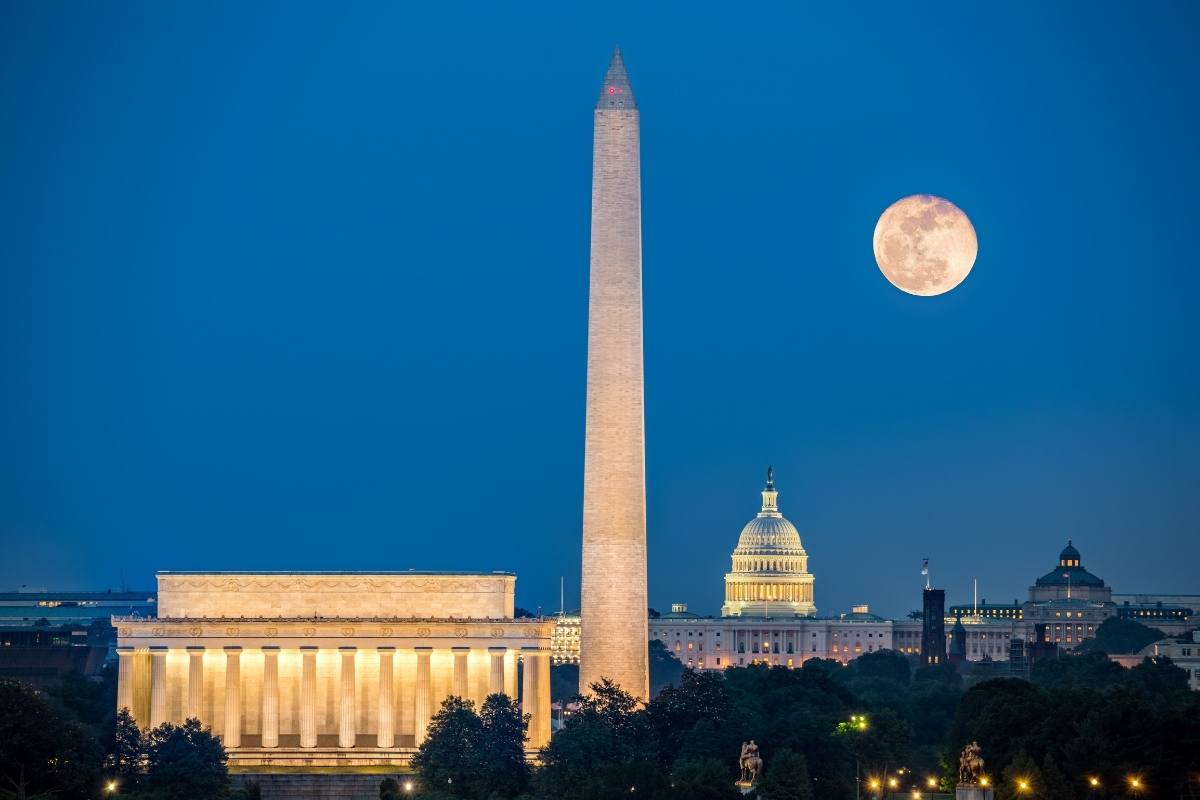
Looking for more information to plan your Washington DC vacation? Check out my additional recommendations to help you plan your trip to Washington, DC , including what to see and do in Washington DC, the best places to stay in Washington DC, where to eat in Washington DC, and more!
Ready to Go? Use These Helpful Links to Book Your Trip!
- Find low fares with airfarewatchdog and Skyscanner
- Book your plane ticket with Expedia or Kayak
- Or take the scenic route on an epic road trip in a rental car or an RV from Outdoorsy
- From hotels to private homes, find the perfect accommodation with Hotels.com or Vrbo
- Travel in style with a suitcase, carry-on, backpack, or handbag from eBags
- Save on tickets to attractions, sightseeing tours, and more with CityPASS , Tiqets , and Viator
- Don’t leave home without travel insurance from AXA
- Discover the sights, history, and culture of your destination with an interactive scavenger hunt
- Need something else to plan your perfect trip? Visit my travel resources page for more trusted partners. Happy wandering!
Thank you for sharing!
21 thoughts on “Smithsonian Museum Guide: Museums and Galleries on the National Mall”
Wow! So many…I did not know. I haven’t visited anyone of them and look forward to doing so. Excellent write-up with complete information for any travellers to plan a trip to the Smithsonian Museum on the mall.
Wow, amazing that these are free! So much to see, do, and learn. Thanks for this comprehensive guide, I especially love your fun facts 🙂
Thanks for sharing a very helpful guide on Smithsonian museums with all pro tips. I went to its Natural Air Space museum and loved all the shows and displays. I would love to see their other museums when I visit Washington DC next time.
That’s an excellent choice. After all, it’s one of the most popular Smithsonian museum with good reason!
I wasn’t aware of Smithsonian museums at all! Now I have learnt from the blog that they are the most widely visible part of the US. They have so many museums and I guess most of them are located in Washington DC, and again most of them in the National Mall. This is surely going to my DC itinerary.
Oh, yes, you can’t go to Washington, DC, and not visit at least ONE Smithsonian museum!
I was so thrilled to read this thorough post as I learned A LOT! I have always heard of the Smithsonian but had no idea what it entailed. I think I would like to start with the National Museum of American History (Dorothy’s slippers and Julia’s kitchen…) and also would find the NMAAHC fascinating and educational. Thank you. Pinned for future use!
Two great choices! There are a lot of nostalgic, “feel good” exhibits at the Museum of American History. And the NMAAHC is a heartbreaking, but necessary, walk through a shameful period of American history. You could spend a week exploring just the museums on the National Mall and still not see them all!
Whoa! That is a long list of museums. And here I was planning a couple of days for museums in the city. But what a great round-up, making choices will be so much simpler with this guide.
I think you could dedicate a full week to just the Smithsonian museums on the National Mall and still not see all of them!
Such a thorough guide of the museums, helpful to anyone who is looking to go there. I especially liked the facts your spread throughout your post. It seems it requires a great deal of time to visit as there is just so much to offer. I think I would enjoy the upcoming Julia Child exhibit. I would love to see her kitchen.
Julia’s kitchen was so incredibly cool. And reading your comment makes me want to watch Julie & Julia again! <3
So cool that Smithsonian museums are a collection of museums, galleries, and zoo. Your comprehensive guide with tips is great. I don’t think anybody can do justice by visiting it for a day! If I ever go there, my top must visits would be the Castle and Zoo!
You could spend a week and still not see everything at the Smithsonian museums in DC! Your top two choices are great ones!
I had little knowlege of the history behind the name Smithson until now. I thought it was very interesting that he had no heirs, neither his nephew, and that he never even lived in the US. I really need to make a week long trip to visit all these amazing museums. I was surprised to see the photo of the long lines at the Museum of Natural History. I’m sure it’s worth the wait tho!
Lucky us here in the US, right?!? Every exhibit I’ve seen at the Smithsonians are amazing. You’ll be impressed!
I really had no idea that the Smithsonian was made up of so many pieces. Your guide is fantastic in laying it all out because it would be so consuming to try and see it all. Me personally, I’d put The Castle at the top of my list.
I think you could spend a week tackling just the Smithsonian museums on the National Mall and still not see it all. The Castle is the perfect place to kick off a visit to the Smithsonian, so good choice! 🙂
I had no idea that Smithson never lived in the US. Definitely lucky for us then! I have been to DC several times and visited a few of the museums that help make up the Smithsonian. By far my favorites (and obviously the two most popular) were the Air and Space Museum and the Natural History Museum. This is a very thorough guide that is quite useful whether it’s your first time or you 20th time! I am saving it for when I go back!
Yes, we Americans are so lucky! Your two favorites are two very good ones. From what I know about your travel interests (I LOVE reading your articles), I recommend the National Museum of American History your next trip to DC. You’ll be able to see the flag flown over Fort McHenry that inspired Francis Scott Key to pen the Star Spangled Banner. There is a really cool exhibit on First Lady Fashion, Julia Child’s kitchen, and so much more.
I wasn’t aware of all these! Great info! I flipped this and re-tweeted it!
Leave a Comment Cancel Reply
Your email address will not be published. Required fields are marked *
Get the latest articles delivered to you!
Thank You! You have successfully joined our subscrib er list.
MEET SAGE CONTACT US MEDIA KIT
DESTINATIONS
Travel interests.
ANIMAL ENCOUNTERS FOOD AND WINE GREAT OUTDOORS MUSEUMS AND MORE NATIONAL PARK SYSTEM ROADSIDE ATTRACTIONS SEASONAL TRAEL STREET ART TRAVEL PLANNING
TRAVEL RESOURCES
COMPANIES I USE TRAVEL GUIDES
LET'S CONNECT!

Disclosure Statement
To help offset the costs of running EverydayWanderer.com, you’ll find affiliate links lightly sprinkled throughout the site. If you choose to make a purchase via one of these links , there’s no additional cost to you, but I’ll earn a teeny tiny commission. You can read all of the legal blah blah blah (as my little niece says) on the full disclosure page .
Copyright © 2023 | Made with love in Kansas City by Sage Scott | Privacy Policy
Smithsonian Voices
From the Smithsonian Museums

SMITHSONIAN BOOKS
Where Is Everybody in Our Universe?
Two physicists contemplate life on other planets in this excerpt from “Exoplanets”
Michael Summers and James Trefil
:focal(812x502:813x503)/https://tf-cmsv2-smithsonianmag-media.s3.amazonaws.com/filer_public/07/79/077988b2-736a-422d-b78a-1b0fcad1f55b/exoplanet.jpg)
The story is that it all started one day in 1950, when a group of prominent physicists— all veterans of the Manhattan Project—were walking to lunch at the Fuller Lodge in Los Alamos. They were discussing the spate of recent UFO sightings that had been claimed in the area, and the conversation turned to the topic of extraterrestrial civilizations. Out of the blue, Enrico Fermi (1901–54), a man well known for his ability to see to the heart of a problem, asked a simple question: Where is everybody? In the years since then, scientists have come to realize that Fermi’s offhand question is, in fact, the deepest question we can ask about life in our galaxy. The fact that there is no evidence for the existence of extraterrestrials in spite of the calculations suggesting that they should exist is known as the Fermi paradox.
So why has his offhand question played such an important role in the debate about extraterrestrials? To understand this, we can go back to our old device of compressing the lifetime of the universe into a single year. In this scheme, the Sun and our solar system formed in the late summer (Labor Day is a convenient approximation), modern humans showed up a few minutes before midnight on New Year’s Eve, and all of recorded history took place while the ball is descending in Times Square, with modern science appearing in the last second of that descent.
The point is this: if there really are other technological civilizations out there, it is extremely unlikely that they developed science after we did—after all, they had the whole year to discover the laws of nature. To understand what follows from this statement, let’s look at a possible future for the human race.

Exoplanets: Diamond Worlds, Super Earths, Pulsar Planets, and the New Search for Life beyond Our Solar System
In Exoplanets, astronomer Michael Summers and physicist James Trefil explore remarkable recent discoveries: planets revolving around pulsars, planets made of diamond, planets that are mostly water, and numerous rogue planets wandering through the emptiness of space.
We’ll start at Princeton University in the 1970s, where physicist Gerard O’Neill (1927–92) was teaching a seminar centered around an interesting question: is the surface of a planet really the best place for a technological civilization? The answer the class came up with was “no,” and from their deliberations came the design for a structure now called an O’Neill colony.
Imagine a hollow doughnut, a mile or more across, rotating slowly in space. In O’Neill’s vision, people live inside the doughnut, and the centrifugal force associated with its rotation substitutes for gravity. Using solar or nuclear power, possibly with ancillary doughnuts for raising crops, such a system could be self-sustaining, a true move of humanity away from our home planet. It is almost within our technological capabilities to build such a structure right now, if not within our budgets. In any case, we should expect that any extraterrestrial race that has come to our level of technical sophistication should also be able to build something like an O’Neill colony.
Let’s imagine how something like O’Neill colonies might play out in our future. Eventually, we can expect that people in colonies like this would leave the space around Earth and move to the truly prime real estate in the solar system, the asteroid belt, where ample material and solar power are available.
It’s the next step that has enormous implications for the Fermi paradox. After a few generations have spent their lives in something like an O’Neill colony, will it really matter to them if their colony is on the way to another star system rather than in the asteroid belt? As the best locations in our own system fill up, it is reasonable to suppose that future space colonists will follow the example of their forebears and “light out for the territories,” except that, in this case, that would mean moving to other solar systems. In essence, we suggest that they would turn their colonies into interstellar starships. How hard would that be?
Let’s make two extraordinarily conservative assumptions. Let’s assume that (1) there is no way to get around the speed-of-light barrier—no “warp drive”—and (2) no major technological advances will be made in the next couple of centuries. The immense distance between stars would require travel times of a century or more, which would mean that the starship would be multigenerational—you get on, your grandchildren get off. Several propulsion systems for such a trip have been proposed—for example, one in which the ship scoops up rarefied interstellar hydrogen to run its power and propulsion systems. The idea of such a multigenerational starship is already a staple of science fiction.
The point of this exercise in futurology is that once a civilization reaches our level of sophistication, it is only a matter of a few centuries before it can start colonizing other star systems. If we can imagine ourselves doing it, then there’s no reason extraterrestrials couldn’t do it as well. The important point for our discussion is that we are talking about a time span of only a few hundred years. In terms of our galactic year analogy, this amounts to only one second. Basically, as soon as the ball touches down in Times Square, Earth could be the center of an expanding wave of human colonization. No one would even have time to say, “Happy New Year.”
How long would it take that wave to engulf the entire galaxy? Most calculations give times on the order of 30 million years or so. And while this is an extremely long time on a human scale, it is only one day in our galactic year. So if extraterrestrial civilizations have been popping up throughout the galactic year, and if at least some of those civilizations are as scientifically adept as we are, there should have been multiple waves of colonization sweeping over the solar system.
So . . . where is everybody?
That, in essence, is a modern look at the question Fermi asked over a half century ago, one we still haven’t been able to answer. His point can be stated this way: we shouldn’t be looking for extraterrestrials out there, as we do in SETI (the search for extraterrestrial intelligence)—we should be looking for them right here. And if we ignore the silliness of UFOs and ancient astronauts, we can say that there is no evidence whatsoever for extraterrestrials being here now or in the past.
Where is everybody? Why the Great Silence?
/https://tf-cmsv2-smithsonianmag-media.s3.amazonaws.com/filer_public/fe/79/fe7925dc-075e-4aa6-8e13-05d0593294e2/exoplanets.jpg)
William of Ockham was an English scholar who is famous for one throwaway line in an otherwise turgid theological treatise. Called Occam’s razor, it says, “Plurality must never be posited without necessity.” In essence, it tells us that when we have a question to answer, the simplest solution is the one we should choose. The concept shaves away complexity; hence the word razor .
There is no doubt that the simplest answer to the questions “Why the Great Silence? Why don’t we hear any SETI signals?” is that we don’t hear signals because no one is sending them. There are a number of other explanations that have been put forward, and we can look at them briefly before taking William of Ockham seriously. Basically, the explanations can be divided into three categories:
1. They really are out there, but they’re not interested in us.
2. They really are out there, but they’re protecting us.
3. They really are out there, and we’re going to get it unless we mend our ways.
An example of the first category would be a race of extraterrestrials living in a Dyson sphere, happy as clams with their star’s energy and supremely uninterested in anyone else. Another possibility would be extraterrestrials on a rogue planet who can’t imagine a planet near a star being inhabitable. An example of the second item in the list is seen in the Star Trek series, where spacefarers obey the Prime Directive, which forbids them from interfering with the development of other life forms. The last category is portrayed in the classic 1950s film The Day the Earth Stood Still , in which an extraterrestrial visitor warns that Earth will be destroyed unless we control our use of atomic weapons:
Klaatu barrada nikto!
All these schemes have two things in common. First, there is no evidence to support any of them, and, second, they are all somewhat improbable in a galaxy with thousands of different advanced civilizations. Some might indeed retreat to Dyson spheres or refuse to go near stars, but to suppose that all of them would is something of a stretch. Similar arguments can be made for the other explanations.
One way to approach the question posed by the Great Silence is to think of each term in the Drake equation as a gateway or valve on the way to an advanced technological civilization. If even one of those terms has a numerical value much less than we have assumed, the effect would be to greatly reduce our estimate of the number of extraterrestrials out there. In essence, that term would act as a kind of filter, blocking the orderly progression implied in the equation. To use a term introduced by economist Robin Hanson, our colleague at George Mason, somewhere in the chain of events in the Drake equation there might be a “Great Filter” that effectively blocks the development of civilizations that might be trying to communicate with us.
Some scientists have argued that the existence of periodic ice ages played an important role in producing the kind of social interactions needed to take humans beyond the hunter-gatherer stage. In one scenario, for example, the need to protect the nutritionally rich shellfish beds along the African coast—a dependable source of food—during an ice age is what led to both the kind of cooperativeness and the kind of aggressiveness that have characterized our species ever since. Again, if you accept this sort of argument, you are saying that the Great Filter is located at the point where intelligence progresses into advanced society. If this is true, there will be lots of planets with the equivalent of dinosaurs out there, but none (or very few) with radio telescopes.
Arguments that say, in effect, that there is something special about Earth that is unlikely to be duplicated elsewhere in the galaxy—go under the name of the Rare Earth Hypothesis. They are put forward most completely in a book titled Rare Earth , by geologist Peter Ward and astronomer Donald Brownlee. Ward and Brownlee’s central thrust is that we have been blindly accepting the Copernican principle—the idea that Earth is not special—and ignoring the fact that there are many unusual things about our home planet. In essence, they look at all the things that are unique about Earth and argue that if they are all necessary for an advanced civilization to develop, then we could well be the only such civilization in the galaxy. For example, if, besides an Earth-sized planet in the CHZ of its star, you need a star located a certain distance from the galactic center, a Jupiter farther out, plate tectonics, the right planetary tilt to produce ice ages, and a large moon to stabilize the planet’s axis of rotation and produce tidal pools (Darwin’s warm little pond), Earth might well be the only planet like that in the galaxy. The Rare Earth answer to the Fermi paradox is thus quite simple: there’s nobody here because there’s nobody there. We are indeed alone.
Those who don’t accept the Rare Earth Hypothesis assert that any specific event you want to talk about is extremely unlikely, and that simply reciting that fact proves nothing. Think, for example, of the chain of unlikely events that led to your reading these words. Your parents had to meet, you had to attend a certain school, learn to read, acquire an interest in science, and so on. There’s no point in harping on this improbability, though, because if you weren’t reading this book, you’d be doing something else equally improbable. In the same way, other types of improbable intelligences could have developed in the galaxy following their own improbable chain of events, and there could be an infinite number of those improbable paths. For these critics, all the Rare Earth Hypothesis proves is that there is at least one improbable path to an advanced civilization (our own); it says absolutely nothing about the possible existence of other paths.
The scenarios we have considered all have one thing in common: they all assume that the Great Filter is behind us, that by some combination of luck or providence, Homo sapiens has made it through all the filters and bottlenecks that stood in our way. But there is another, much more frightening possibility. What if none of these events in our past constitutes the Great Filter? What if the Great Filter is still in front of us?
To understand the importance of this question, let’s think for a moment about the nature of the evolutionary process. Natural selection is driven by one criterion and one criterion only: the need to get an organism’s genes into the next generation. Winners in the evolutionary game, in other words, are not determined by moral or ethical considerations. Consider the history of our own species as an example of this statement. The appearance of Homo sapiens in any region once we left Africa was accompanied by the disappearance of competing hominids (think Neanderthals and Denisovans) and just about every large animal (think woolly mammoths and giant tree sloths). We became the dominant life form on the planet by wiping out our competitors, either directly or indirectly. Given this history, we think it’s fair to say that Homo sapiens is not the sort of species you’d want to meet in a dark alley, and the same will be true of any other winner of the evolutionary game who became the dominant species on their planet.
The “Great Filter is in front of us” argument goes like this: despite the Rare Earth Hypothesis, there really doesn’t seem to be anything all that special about the way that life developed on Earth, and given the abundance of planets out there, there is no reason that complex life shouldn’t be quite common. On the other hand, from what we know about the process of evolution, we can expect the winners of the evolutionary game on other planets to be no more benevolent than Homo sapiens . In this case, the coming Great Filter is easy to see. Once an aggressive, warlike species discovers science, they are likely to turn their discoveries against one another and, in essence, wipe themselves out.
The picture of galactic history that comes from this argument is a disturbing one. From the very beginning, intelligent, technologically advanced societies have appeared only to disappear in a short time as they succumb to their own dark inner nature—a nature produced by the laws of natural selection. No one is out there, in other words, because they’ve all wiped themselves out long ago, before we started listening.
Exoplanets is available from Smithsonian Books. Visit Smithsonian Books’ website to learn more about its publications and a full list of titles.
Excerpt condensed for print from Exoplanets: Diamond Worlds, Super Earths, Pulsar Planets, and the New Search for Life beyond Our Solar System © 2017 by Michaels Summers and James Trefil
A Note to our Readers Smithsonian magazine participates in affiliate link advertising programs. If you purchase an item through these links, we receive a commission.
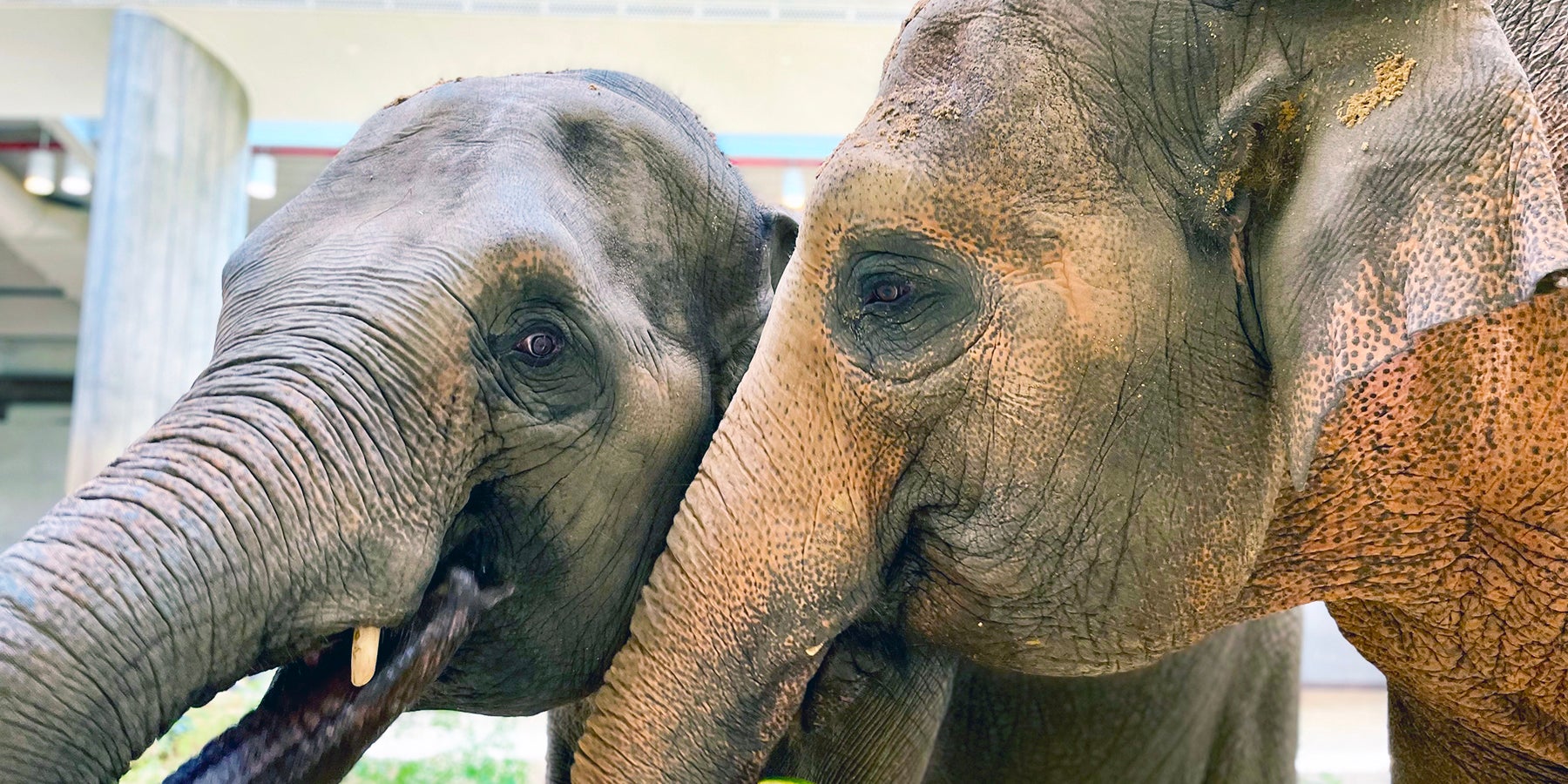
Elephant Cam
See the Smithsonian's National Zoo's Asian elephants — Spike, Bozie, Kamala, Swarna and Maharani — both inside the Elephant Community Center and outside in their yards.

Now more than ever, we need your support. Make a donation to the Smithsonian's National Zoo and Conservation Biology Institute today!

Become a Member
Members are our strongest champions of animal conservation and wildlife research. When you become a member, you also receive exclusive benefits, like special opportunities to meet animals, discounts at Zoo stores and more.
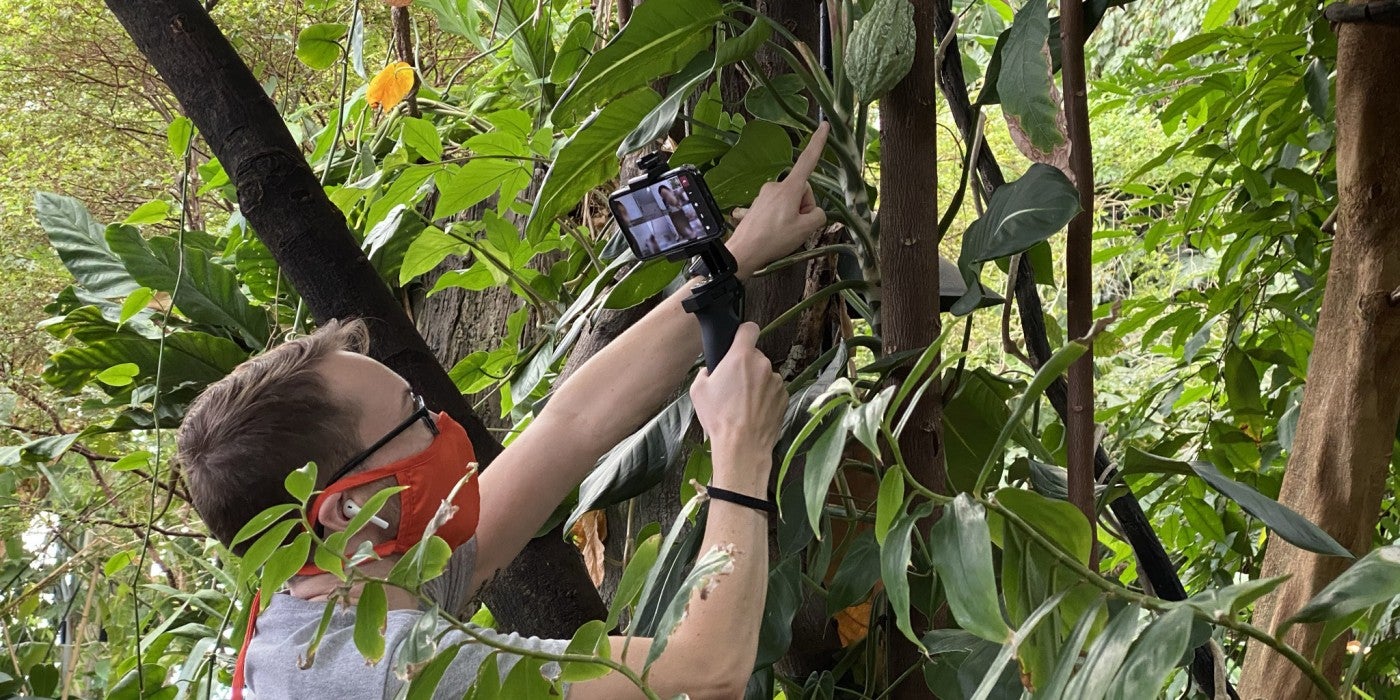
Education Calendar
Find and register for free programs and webinars.
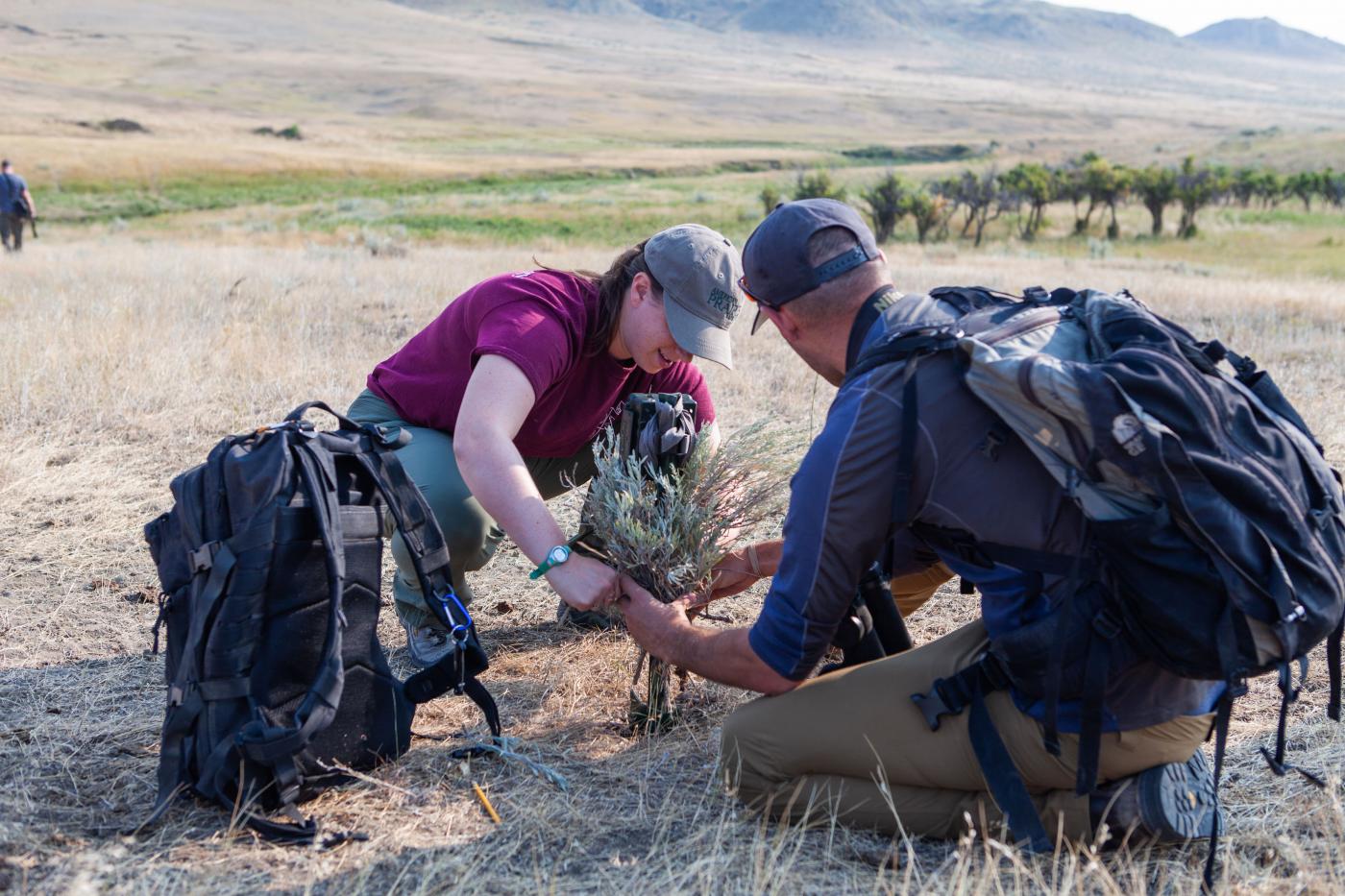
About the Smithsonian Conservation Biology Institute

Amphibian Awareness Week
May 5, 2024
About the Event
Hop into Amphibian Awareness Week at the Reptile Discovery Center ! On Sunday, May 5, from 10 a.m. to 2 p.m., join the Zoo’s animal care team and scientists from the U.S. Fish and Wildlife Service, U.S. Geological Survey, National Park Service, Forest Service and U.S. Navy as they celebrate the awesome and amazing abilities of amphibians native to the United States and around the world. Learn about cutting-edge conservation research, go “toad-to-toad” in an amphibian trivia game, and leap to the art station to create your own colorful amphibian or print-screen frog tee.
From 11 a.m. to 1:30 p.m., keepers will host animal demonstrations near the Jewels of Appalachia exhibit. Visitors can meet animal ambassadors, including a Panamanian golden frog, coronated tree frog, Vietnamese mossy frog, California tiger salamander, Japanese giant salamander, and a salamander native to the Shenandoah mountains of Virginia. See them up close, learn fun facts to share with friends and get tips on how to help amphibians where you live. These demonstrations will take place every 30 minutes on the hour and half-hour.
This event is free, open to the public and will take place rain or shine.
Reptile Discovery Center
10 a.m. - 2 p.m.
- Weird But True
- Sex & Relationships
- Viral Trends
- Human Interest
- Fashion & Beauty
- Food & Drink
trending now in Lifestyle

TikTokker reveals little-known detail in the 7-Eleven logo: 'How...

Hairstylist reveals the top 10 'icks' people do when they get...

Dear Abby: I spent a decade faithful to my wife just to find she...

Brazen couple has sex romp in packed NYC park in full view of...

Comments on influencer's 'hot' bikini pic sends her into a...

Aldi reveals big grocery price change — here's how it will...

My daughter heard 'monsters' in the wall — what we discovered...

School hopes to reverse Gen Z's bad habits with 12-hour days:...
Gen zers are ‘addicted’ to fast fashion shopping — despite claiming to care about the environment.
- View Author Archive
- Get author RSS feed
Thanks for contacting us. We've received your submission.
Tik Tok on the shop.
Gen Zers are addicted to fast fashion — despite claiming to care about the environment, according to a recent report from online thrift store ThredUp .
Despite a majority saying they want to shop more sustainably (65%), one-third of those surveyed by ThredUp said they are addicted to fast fashion.
Lottie Lashley, 25, said she used shopping as a coping mechanism to help her settle into her first year of university. The former shopaholic from London spent her downtime scrolling through fast-fashion websites, spending about $120 a month.

“I would say it was an addiction to fast fashion,” Lashley previously said . “Seeing it, and needing to have it.”
The Gen Zer now considers herself a reformed fast fashion addict after coming to terms with the environmental impact of her shopping — but many of her peers have yet to be reformed despite claims of the generation’s eco-consciousness.
Gen Zers are more likely than any other generation to say that the climate crisis is their top concern . However, they continue to make up a large portion of fast fashion buyers despite the environmental impact of the industry being common knowledge among the generation.
The fashion industry, as a whole, is the second-biggest consumer of water and is responsible for 2% to 8% of global carbon emissions . It’s also on track to consume 26% of the world’s carbon budget by 2050 — and experts note that fast fashion is a major part of this.
“I feel like with Gen Z there’s sort of like dissonance where we say we care about sustainability, but then all of the Gen Z influencers who are influencing millions of people are telling us to go to these fast fashion brands that are only making things to be worn like three times,” Estella Struck, 22, who founded a marketing agency focused on sustainable brands, told Business Insider .

Gen Z is using both their influence and buying power to support the fast fashion industry, with a third of college students describing themselves as “addicted” to their affordable and stylish shopping habits.
ThredUp even joined forces with “Stranger Things” star Priah Ferguson in 2022 to launch the “Fast Fashion Confessional Hotline,” a phone service designed to deter fast fashion lovers from impulsively snapping up cheap clothing.
Yet, the fast fashion industry continues to cram clothes into people’s closets.
“As a result of the constant bombardment of targeted advertising and the offering of online deals, young consumers like myself tend to buy on impulse more than ever before,” Melanie Parncutt, a Zoomer who works as a publicist at Otter Public Relations, told BI.
“It can be hard to break out of the cycle.”
Many Gen Zers are confessing that they feel guilty after excitedly opening their Shein or Fashion Nova packages, but blame the high cost of living and pressure to stay updated on microtrends for pushing them to buy.

Fashionistas who want to update their wardrobes but remain eco-friendly can and are turning to thrifting and vintage shopping — Instagram’s 2023 trends report claimed that Gen Z consumers are more “frugal and thrifty,” as many cite “climate concerns” as a major factor in opting for “DIY clothing” and “thrifting.”
But acquiring the latest press-on nail obsession or Ralph Lauren dupe is much faster and cheaper when clicking a few buttons on your phone from the TikTok shop.
“It seems like Gen Z are backed into a corner where we have to trade-off between caring about the planet or being fashionable,” Struck said.
Share this article:

Advertisement

IMAGES
COMMENTS
The Smithsonian welcomes guests to bring any medical supplies, devices, or equipment they might need during their visit. ... Visitors who bring medically necessary items/equipment should plan to maintain possession of them throughout their visit. All Smithsonian locations permit the use of manual and motorized mobility devices (e.g., scooters ...
17. And Wear Comfortable Shoes. Of all the tips for visiting the Smithsonian museums, do not overlook the importance of wearing comfortable shoes! Simply walking counter-clockwise from the Smithsonian Castle to the other Smithsonian museums located on the National Mall is a 2.5-mile undertaking.
Plan your Smithsonian visit. When you visit the Smithsonian, you're entering the world's largest museum complex, with approximately 157 million artifacts and specimens in its trust for the American people. Most of our museums are located in the Washington, D.C., area with two in New York City.
The Smithsonian Museums in Washington, DC are world class attractions with a variety of exhibits ranging from a 3.5 billion-year-old fossil to the Apollo lunar landing module. Visitors enjoy examining more than 137 million objects, including many irreplaceable historic artifacts, works of art, scientific specimens and cultural exhibits.
When you visit any of the Smithsonian's buildings you will discover that we have security measures to ensure your safety and the safety of the objects contained within. At many of our museums, you'll be greeted upon entry by one of our security personnel who will conduct a thorough hand-check of all bags, briefcases, purses, and containers. ...
Narrated Tours. The Smithsonian National Museum of Natural History virtual tours allow visitors to take self-guided, room-by-room tours of select exhibits and areas within the museum from their desktop or mobile device. Visitors can also access select collections and research areas at our satellite support and research stations as well as past ...
When you visit any of the Smithsonian's 16 museums or the National Zoo, you are entering the world's largest museum complex. ... (202) 357-2700. The Smithsonian Associates welcomes visitors to their after-hours performances, lectures, films and tours listed in The Associate monthly, free in museum shops or call (202) 357-3030. ...
10 Travel Tips For Visiting The Smithsonian. Although you can't bring food into the museums, you can bring bottled water ( which I highly recommend because the museums are gigantic and you'll be walking a lot ). You'll want to plan for a max of two museums a day ( just to take in the whole experience ).
The Smithsonian Institution includes 21 museums plus the National Zoo making it the largest museum, education, and research complex in the world. Most of the museums are on the National Mall in Washington, DC plus two in New York City and one in Chantilly, VA. So, it's going to require some time to visit everything!
United States. Washington, D.C. Sage Scott. Feb.14.2020. Washington, D.C., offers so much to see and do that incorporating a visit to the Smithsonian might seem overwhelming. After all, the Smithsonian isn't a single museum. Rather, it's a collection of 19 museums, galleries, gardens, and a zoo, making it the world's largest museum complex.
Avoiding the Crowds By Skipping Peak Times. (True) The Smithsonian Institute recommends avoiding visiting on weekends, holidays, during the National Cherry Blossom Holiday Festival and Winter Break. Arriving early on weekends and late on weekdays. For the most part, they are spot on.
So, if you find yourself wandering through the streets of the nation's capital, here's a curated list of must-see iconic items that should be at the top of your itinerary. 1. The Original Star-Spangled Banner. The very first thing you'll see when you walk into the American History Museum is a dazzling Star-Spangled Banner art piece.
When you visit any of the Smithsonian's museums and Zoo, you will discover that we have security measures to ensure your safety and the safety of the animals and objects. During peak visitation days at the Zoo, you may be greeted upon entry by one of the security personnel who will conduct a thorough but speedy hand-check of all bags, strollers ...
Welcome. The Smithsonian Institution is the world's largest museum, education, and research complex. We are a community of learning and an opener of doors. Join us on a voyage of discovery. Explore our vast digital resources and learn online.
Exploring everything in Washington D.C.'s Smithsonian museums could take an entire vacation. Here are the must-see highlights if you only have a short time to explore.
The Smithsonian collections contain over 155 million objects, works of art and specimens - from the origins of man at The Natural History Museum which includes objects such as the famed Hope Diamond, to the history of flight and the future of space travel at the Air and Space Museum where you can even see the Wright brothers' 1903 Flyer.
600 Independence Ave. SW. Hours of Operation: 10:00 am to 5:30 pm daily (except December 25) Sage Advice: The National Air and Space Museum offers free, 90-minute tours daily at 10:30 am and 1:00 pm. Kicking off the second half of this guide to the Smithsonian National Mall museums is the National Air and Space Museum.
The Smithsonian Museums of Washington DC are world renowned for their endless collection, spread out across 70 museums in Washington DC. In this adventure w...
Does the Smithsonian offer student travel programs? 1. How do I reserve my space on a Smithsonian Journeys tour? It's easy—you can reserve online at any time or call at 855-330-1542 (M-F: 9 AM-6 PM EST) for calls from outside of the United States, please call 989-702-2515. You can pay with most major credit cards.
Collection of the Smithsonian National Museum of African American History and Culture, Stanley Turkel's Collection of Reconstruction Era Materials. ... The Era of Segregation 1877-1968 exhibition, providing a backdrop against which we see African Americans resisting white efforts to deny them "life, liberty, and the pursuit of happiness."
Now, 84 years later, the bunkers beneath Villa Torlonia, Mussolini's home in Rome, have reopened to the public. Visitors can book 50-minute guided tours of the subterranean complex, which ...
Out of the blue, Enrico Fermi (1901-54), a man well known for his ability to see to the heart of a problem, asked a simple question: Where is everybody? In the years since then, scientists have ...
10 a.m. - 2 p.m. Hop into Amphibian Awareness Week at the Reptile Discovery Center! On Sunday, May 5, from 10 a.m. to 2 p.m., join the Zoo's animal care team and scientists from the U.S. Fish and Wildlife Service, U.S. Geological Survey, National Park Service, Forest Service and U.S. Navy as they celebrate the awesome and amazing abilities of ...
The former shopaholic from London spent her downtime scrolling through fast-fashion websites, spending about $120 a month. Gen Zers are addicted to fast fashion despite claiming to care about the ...